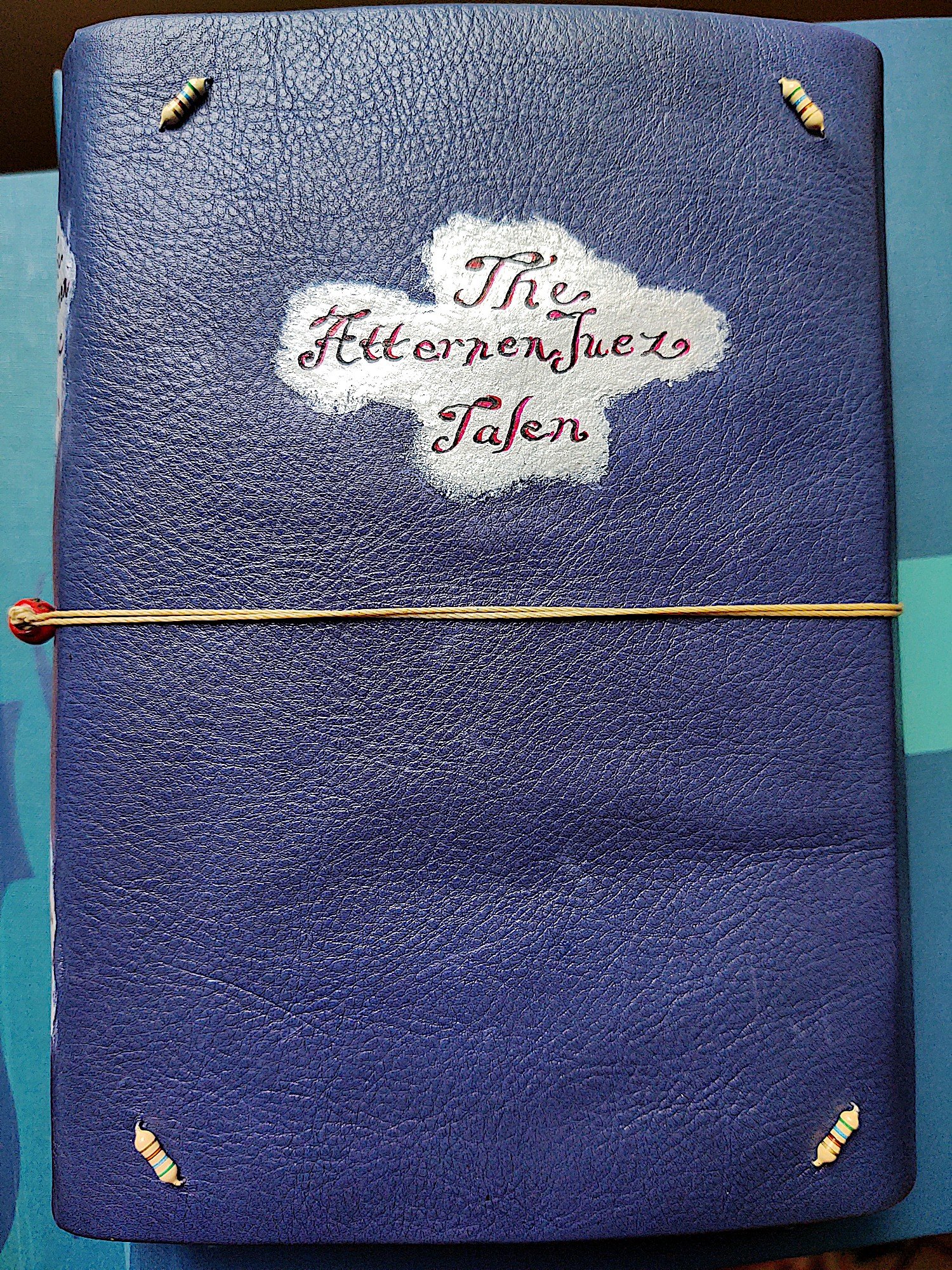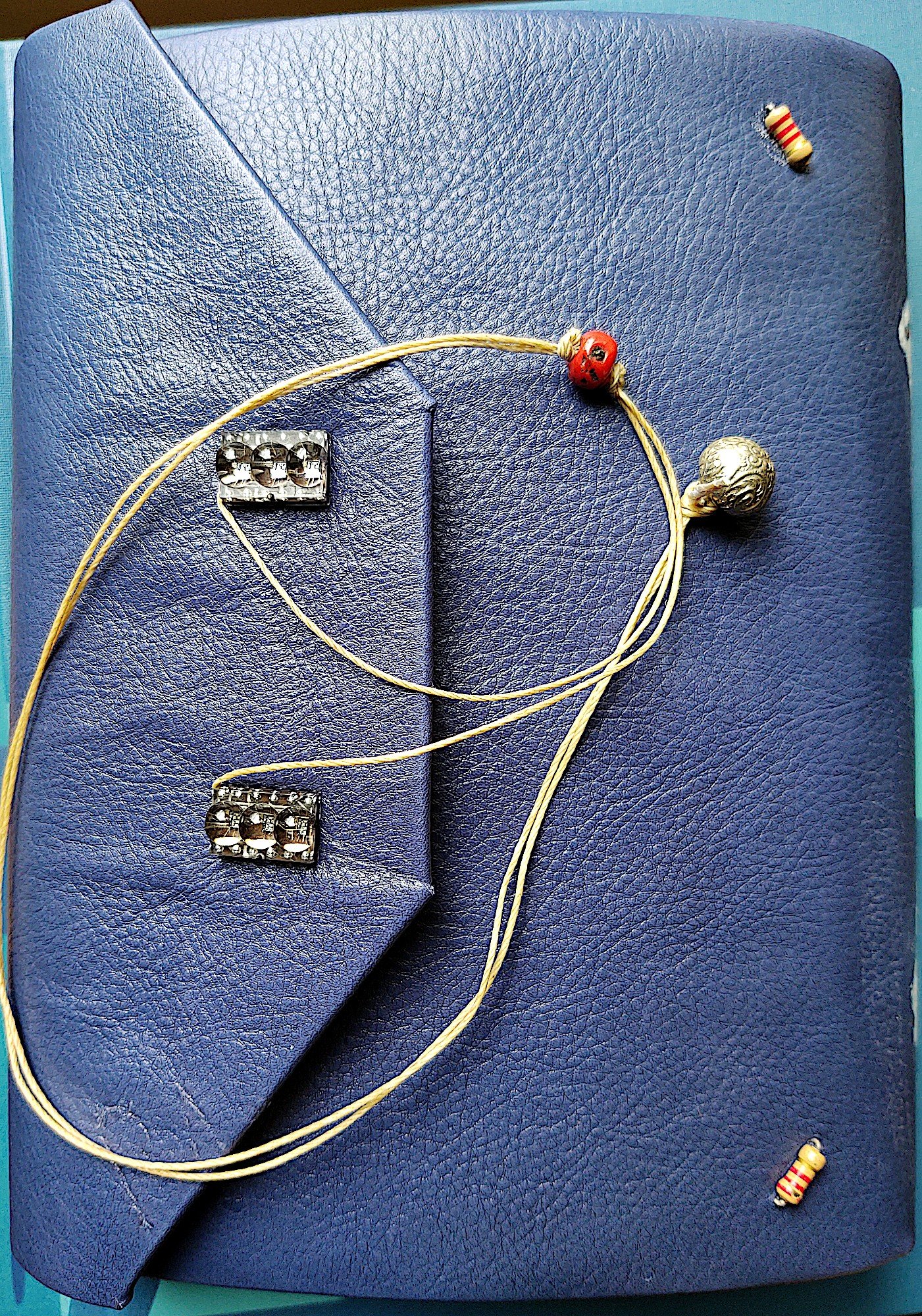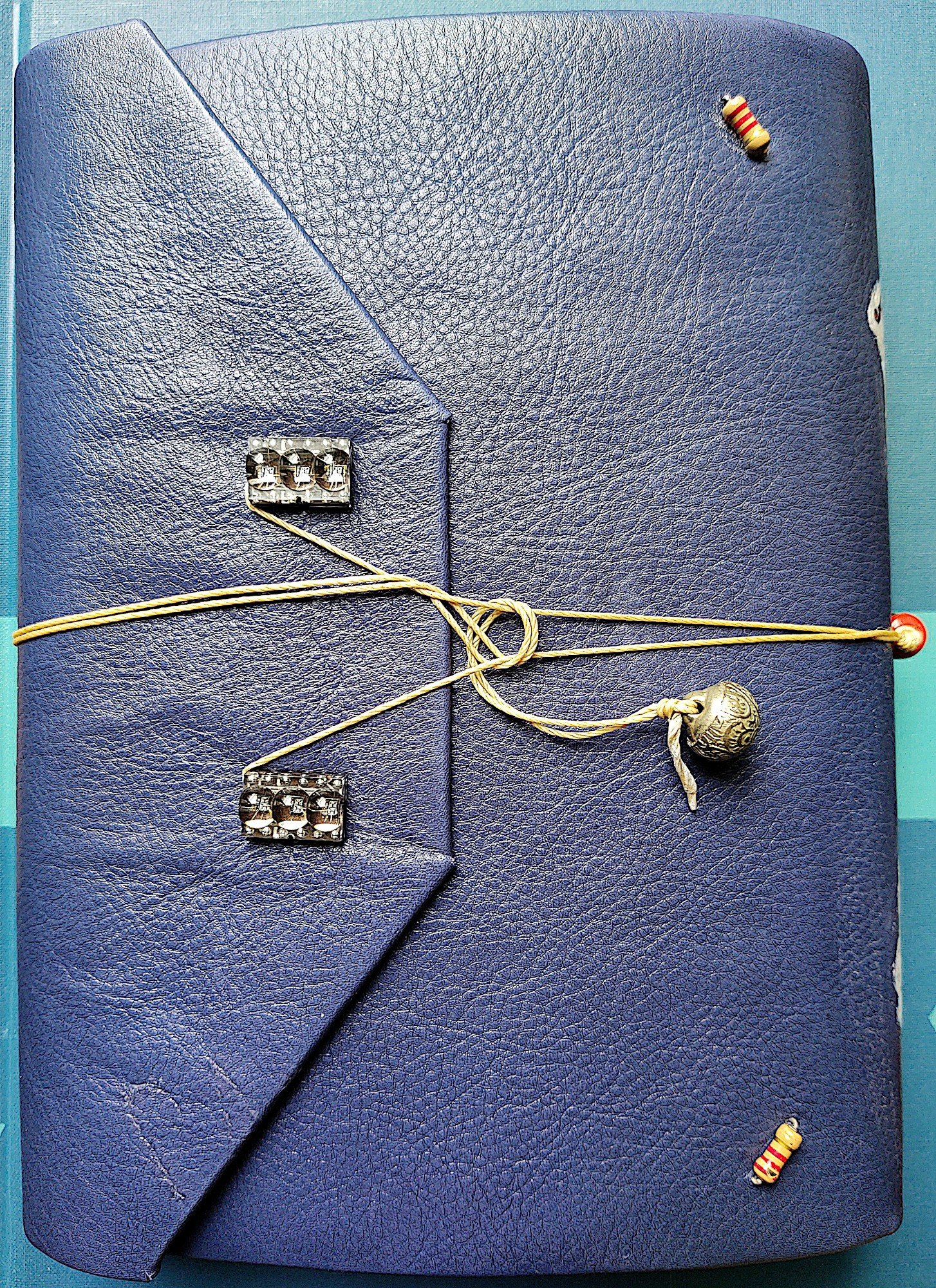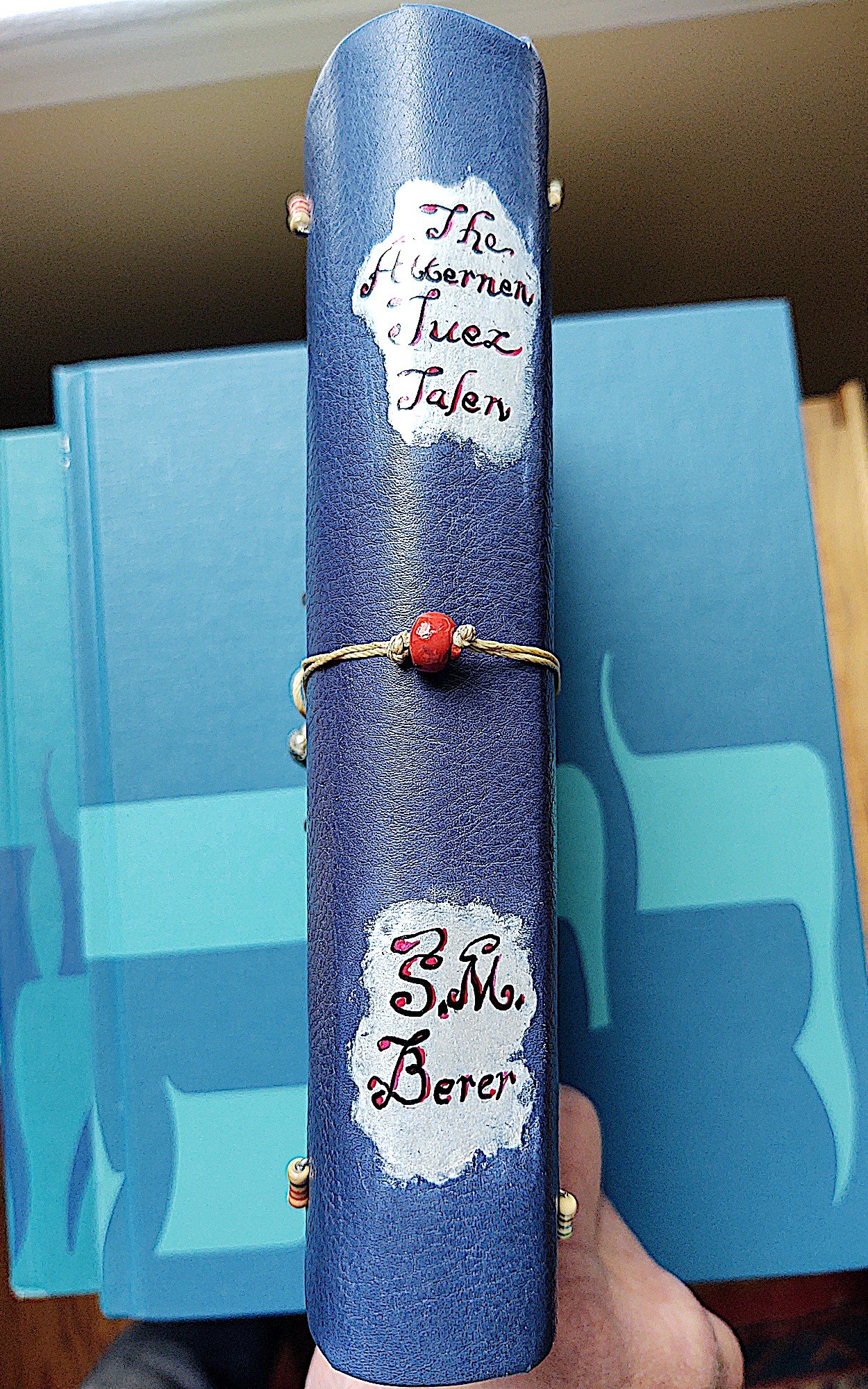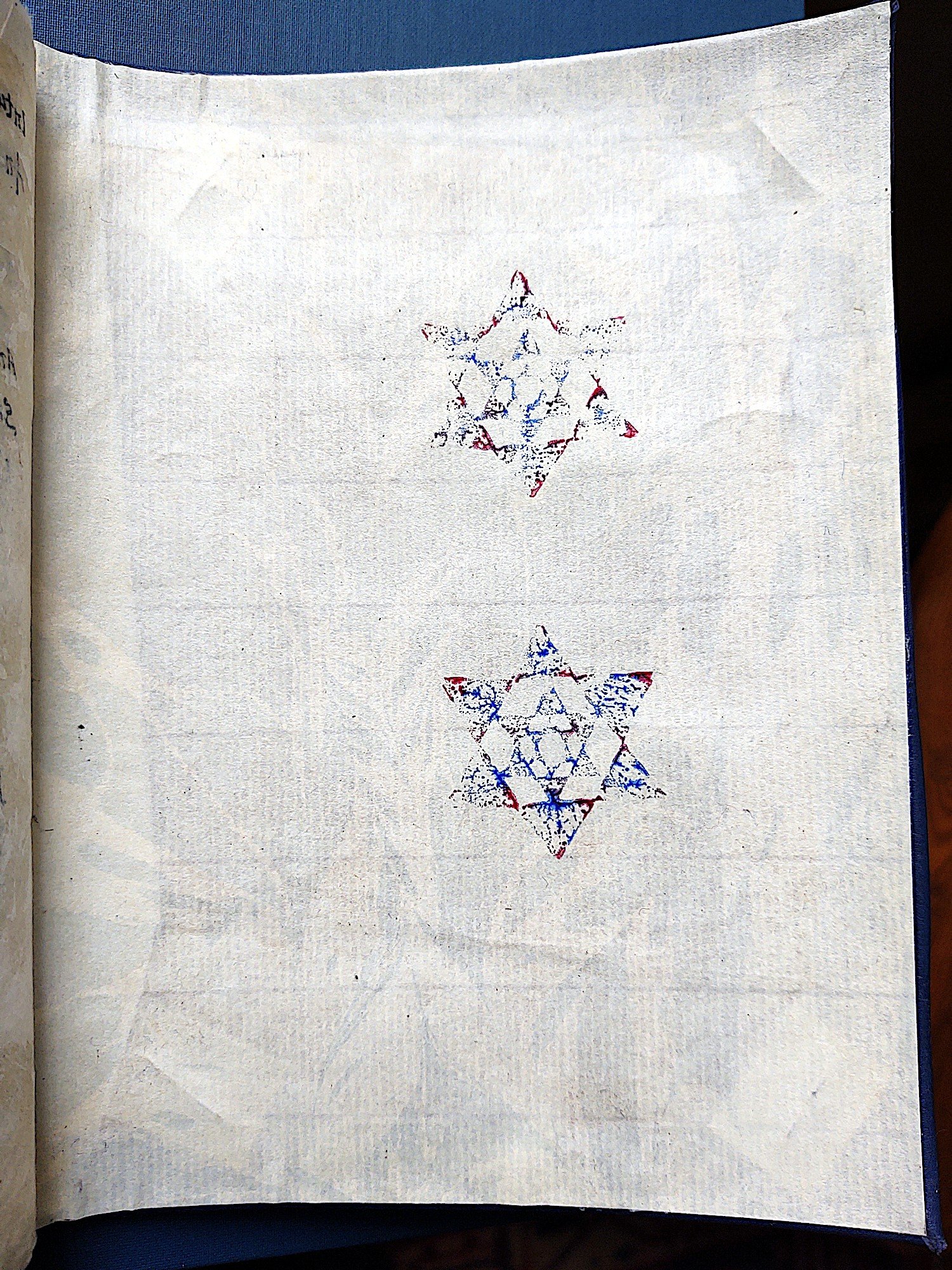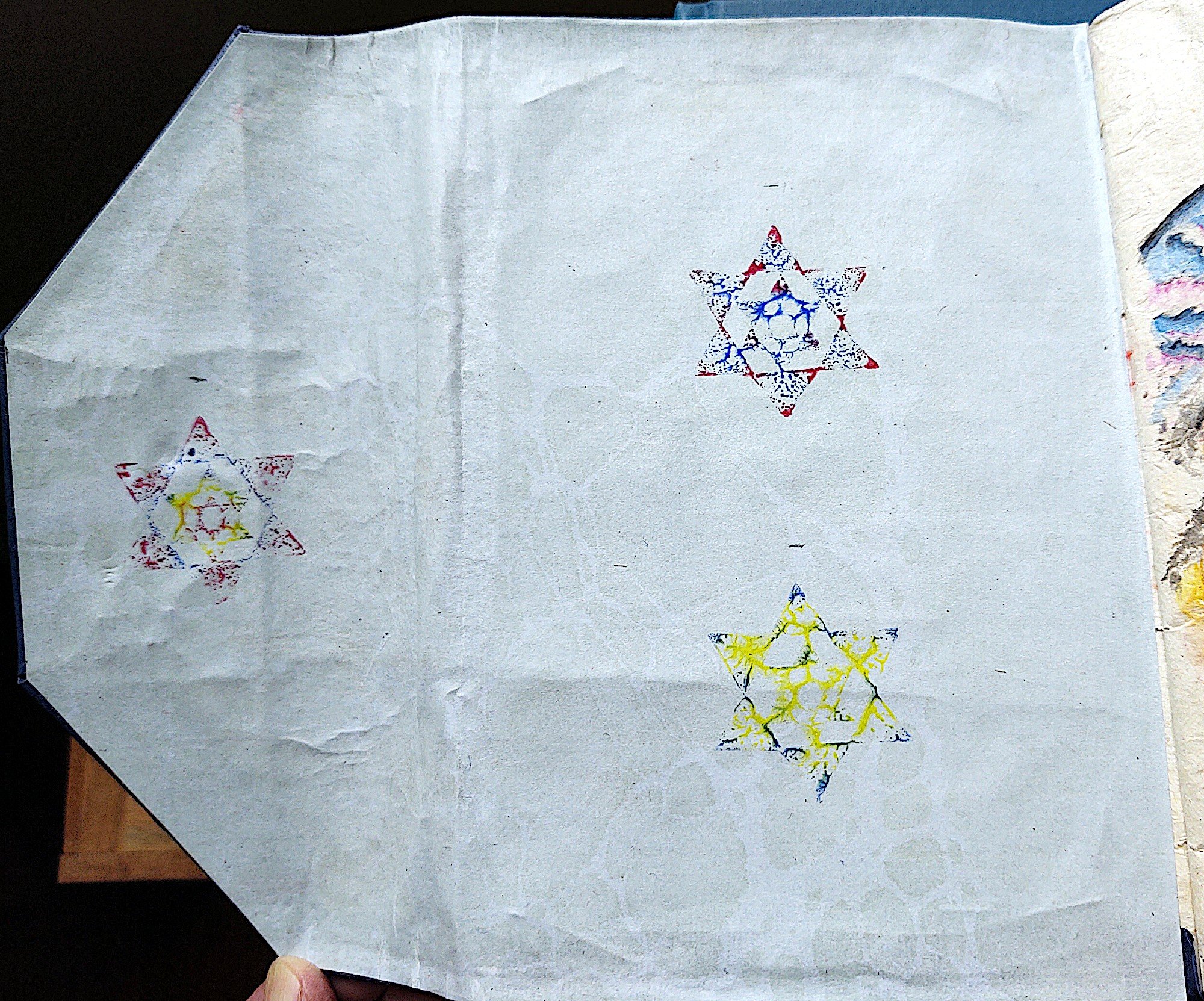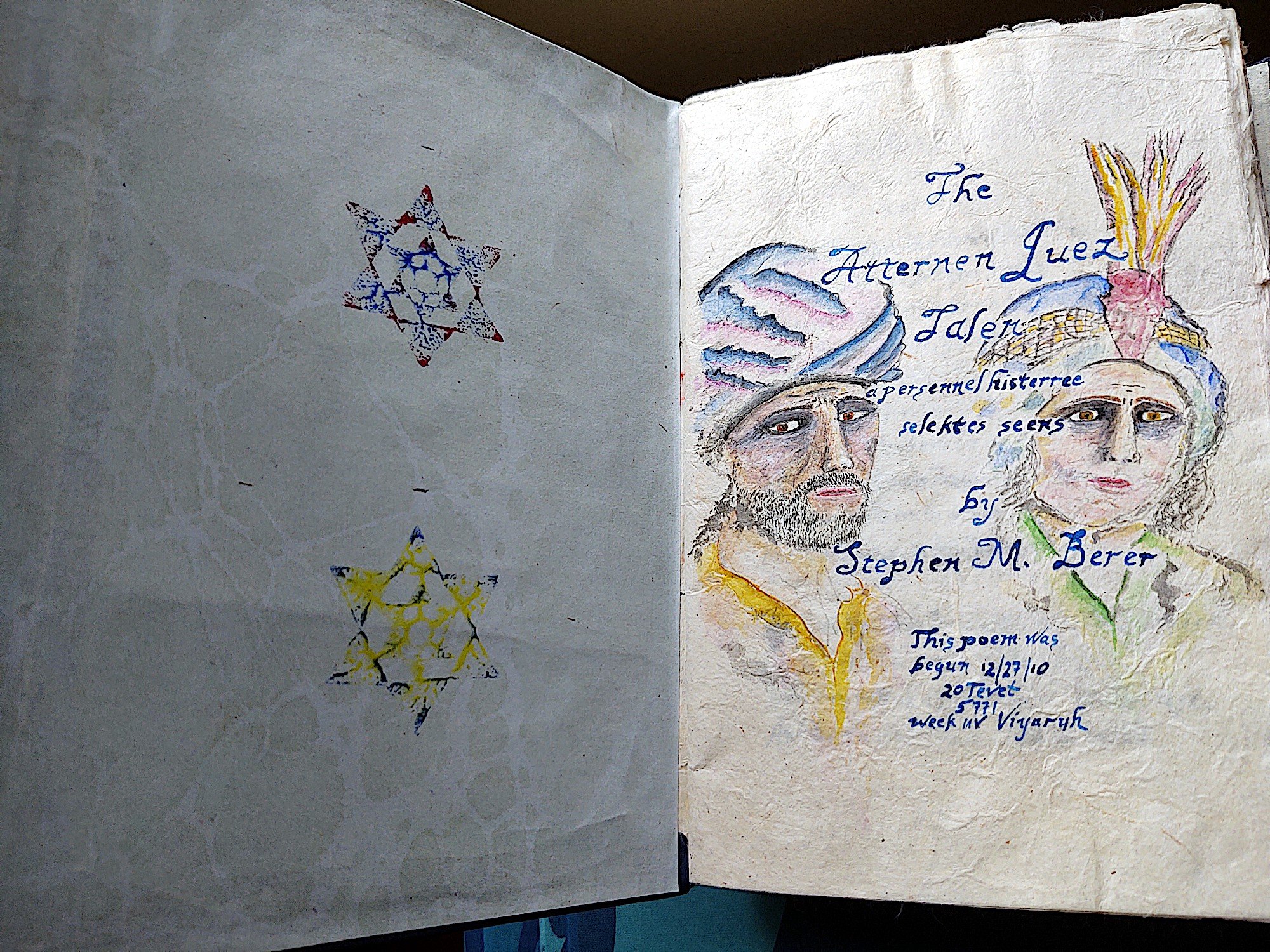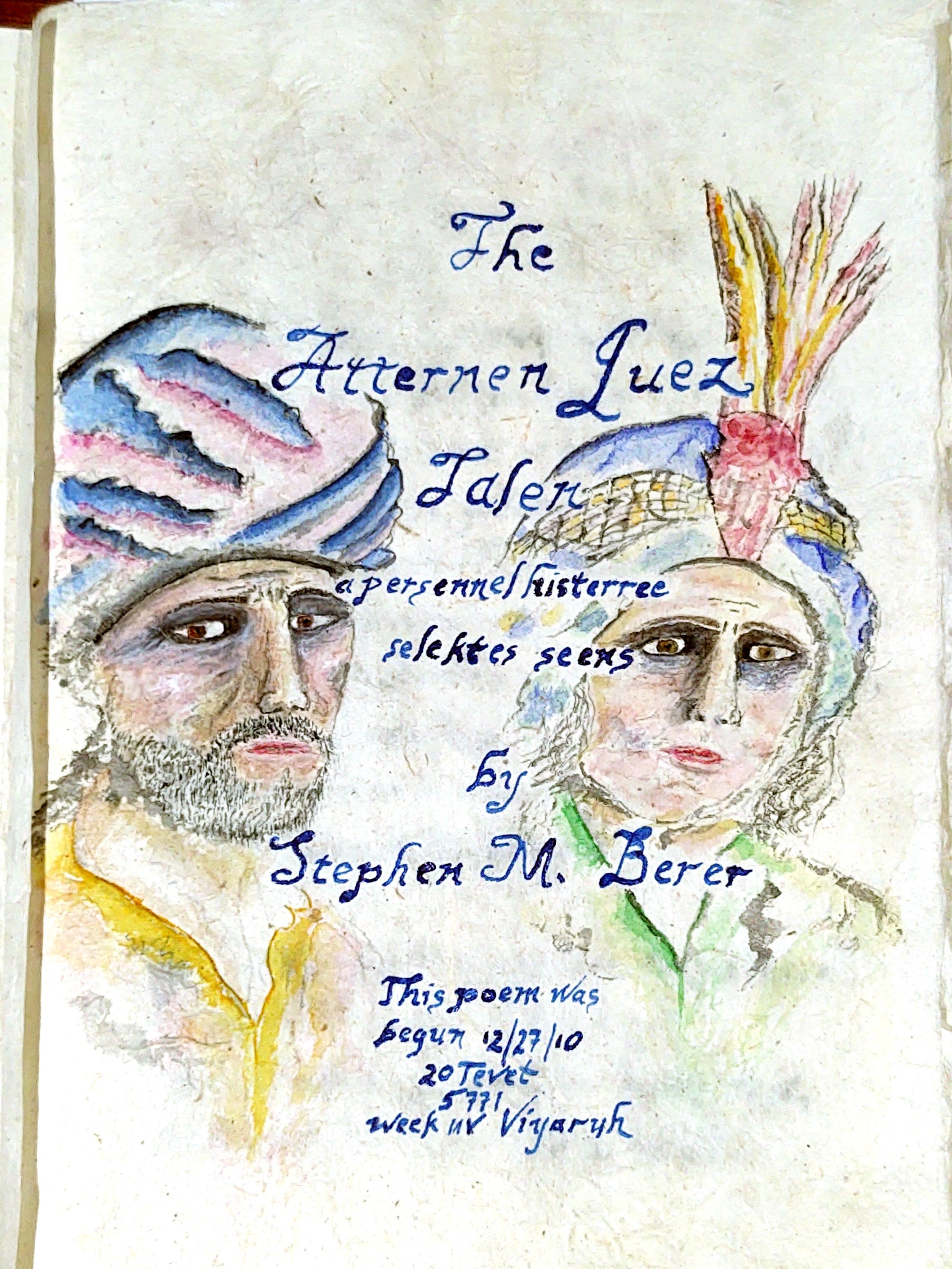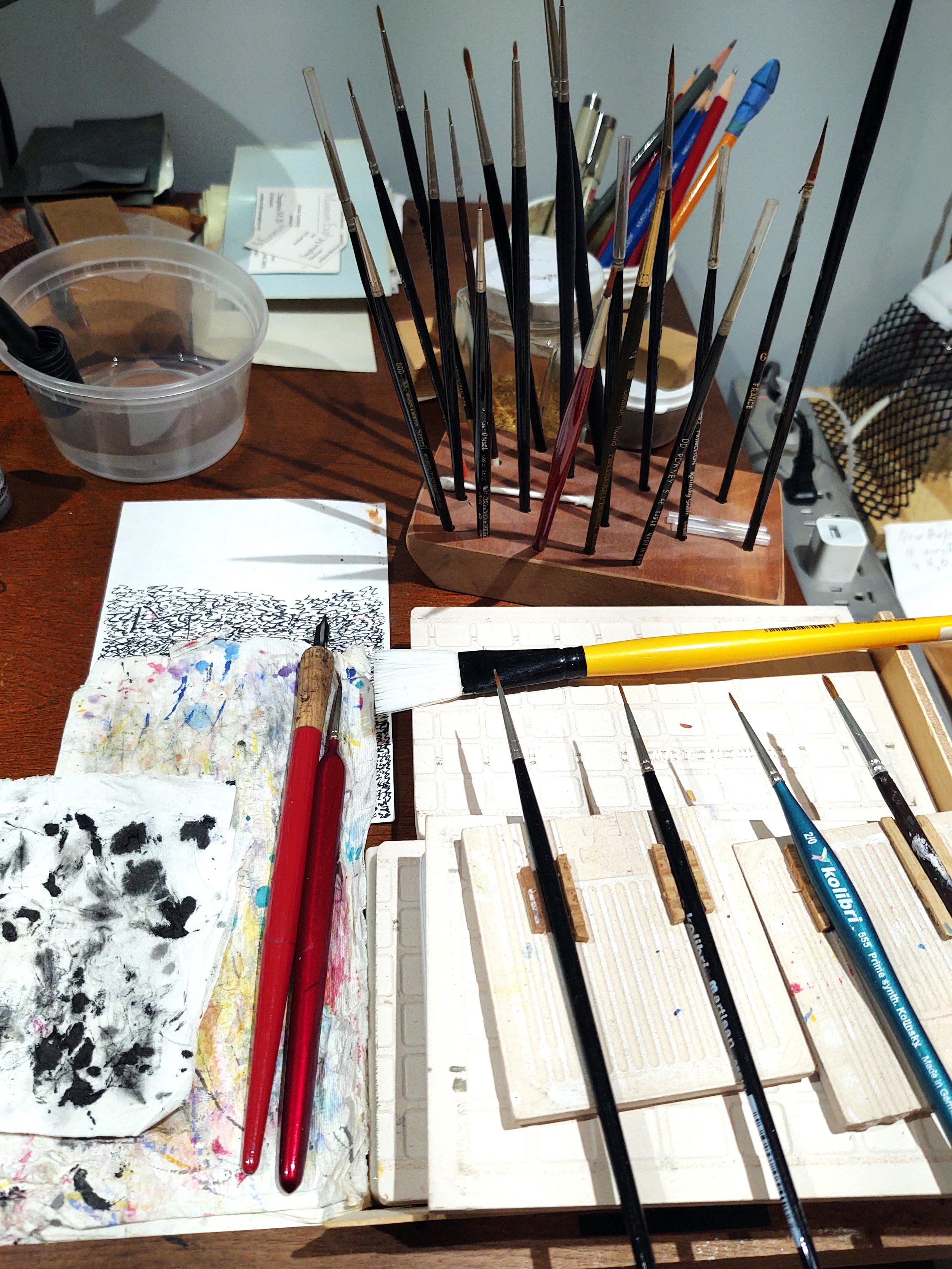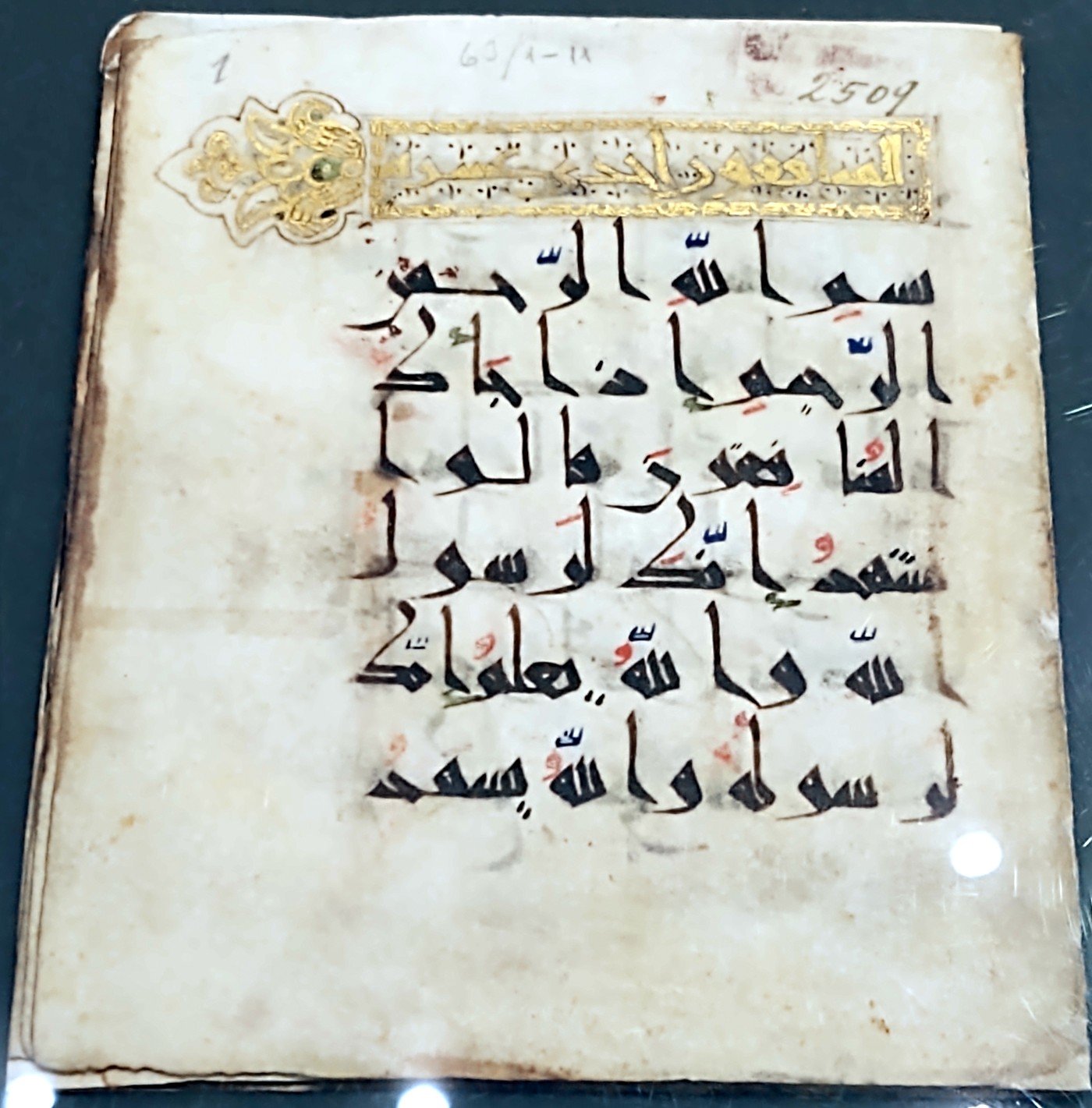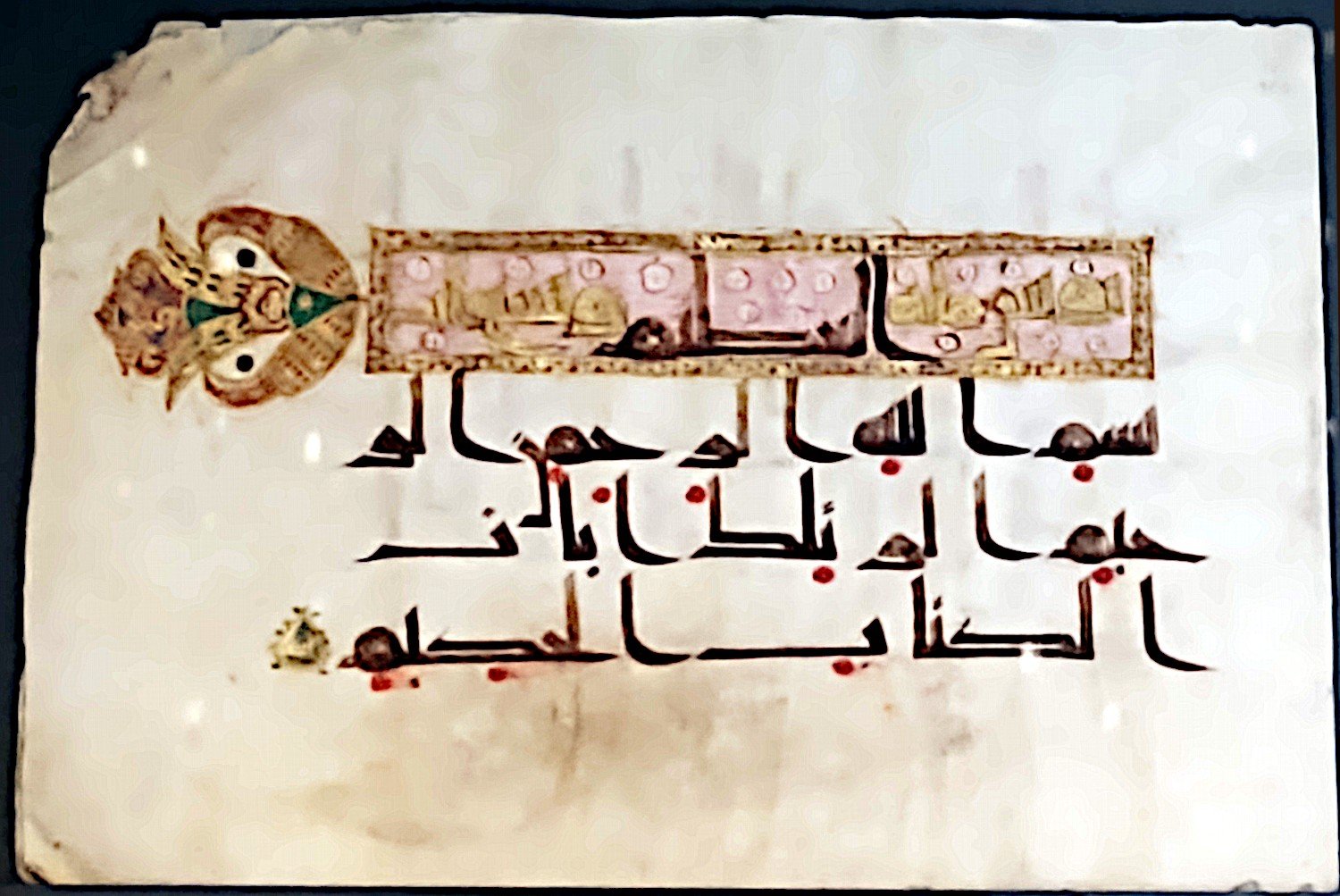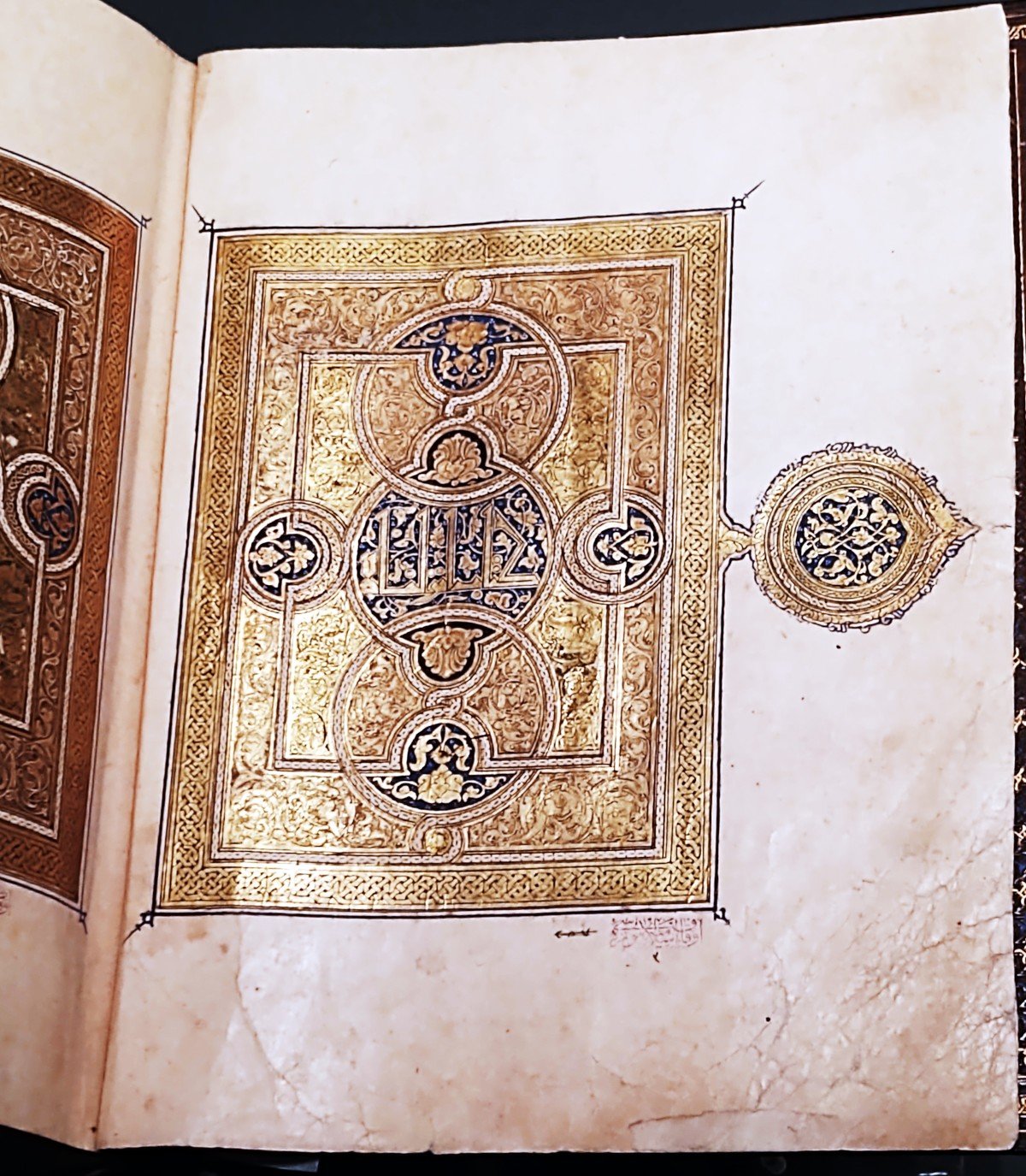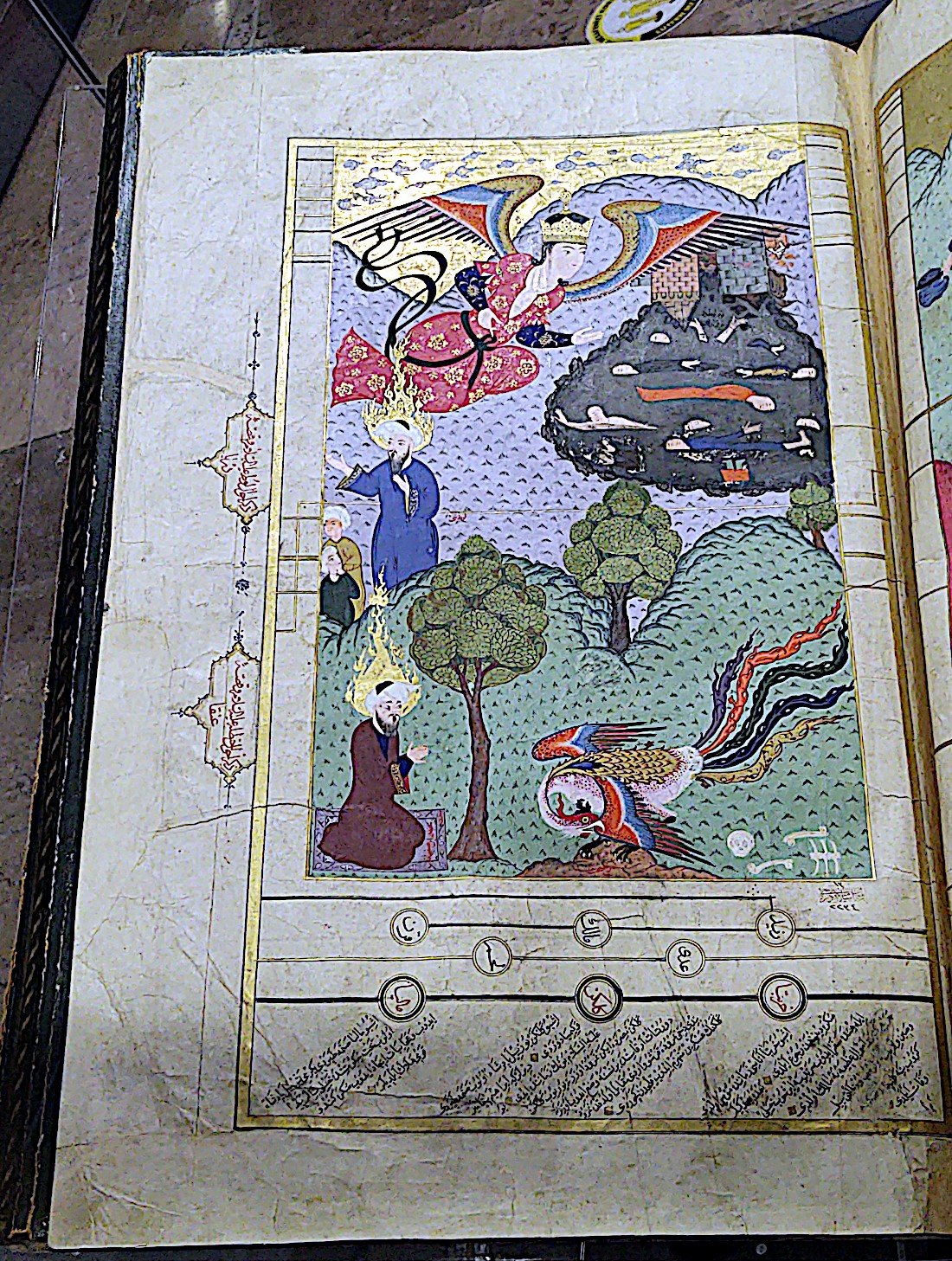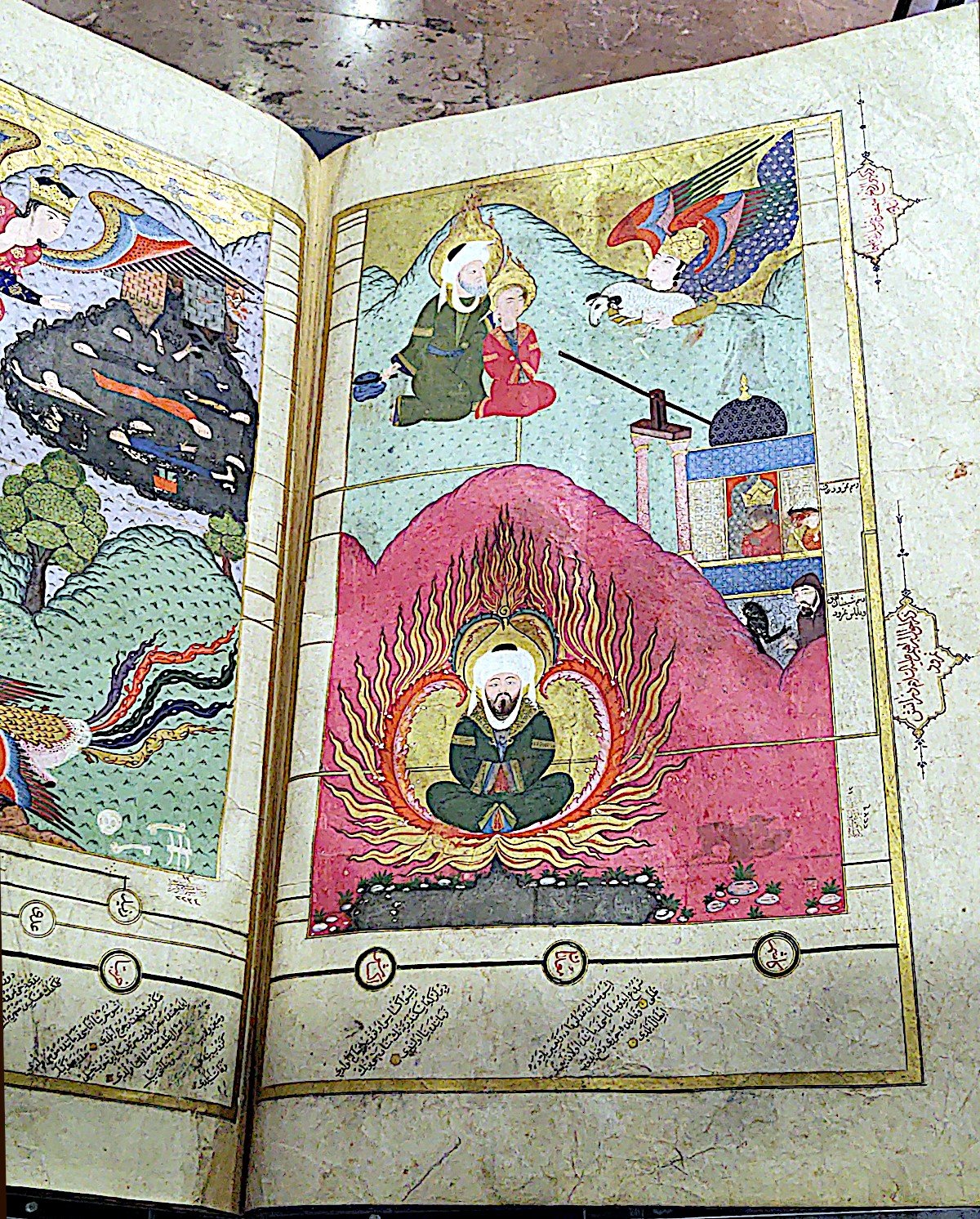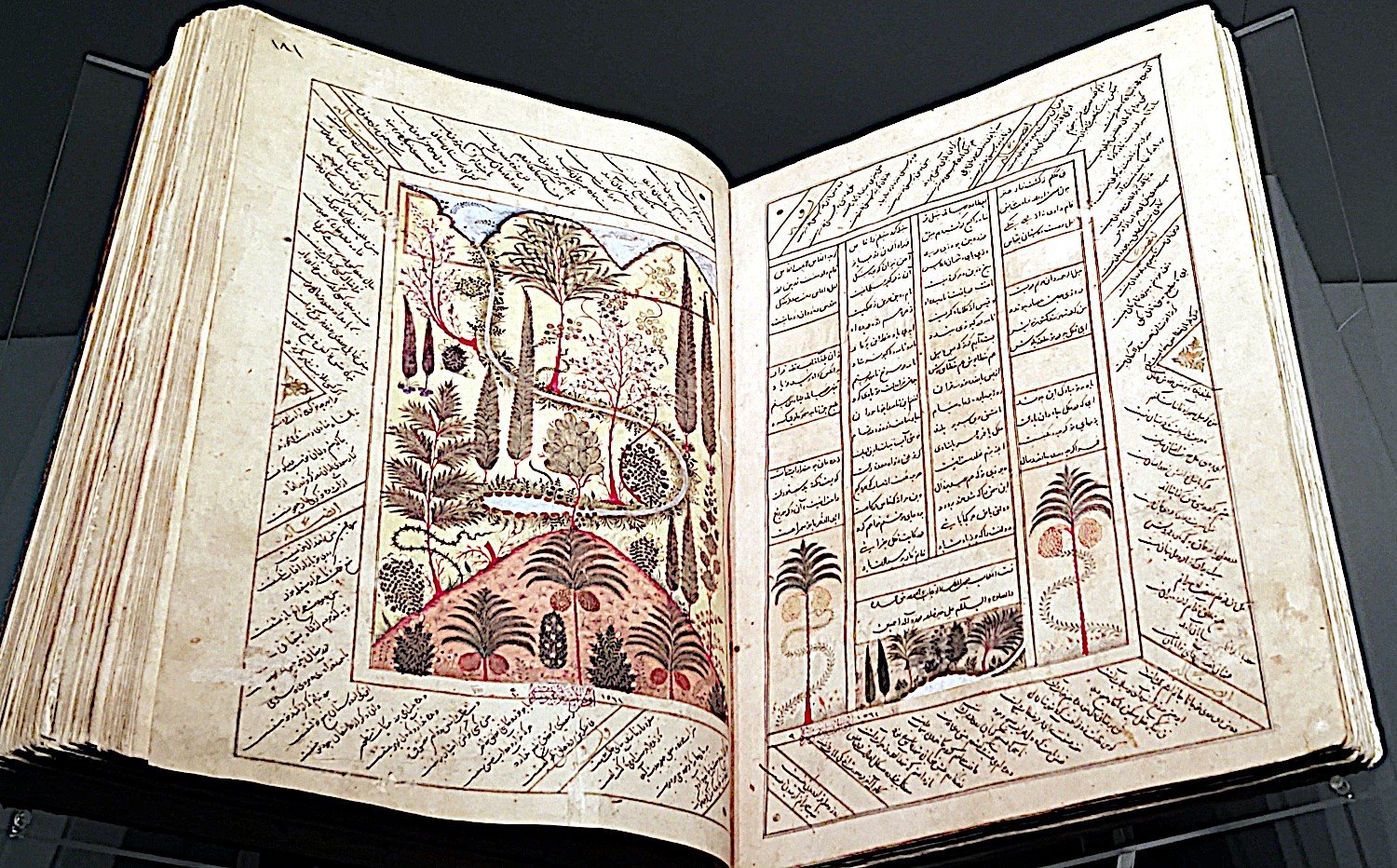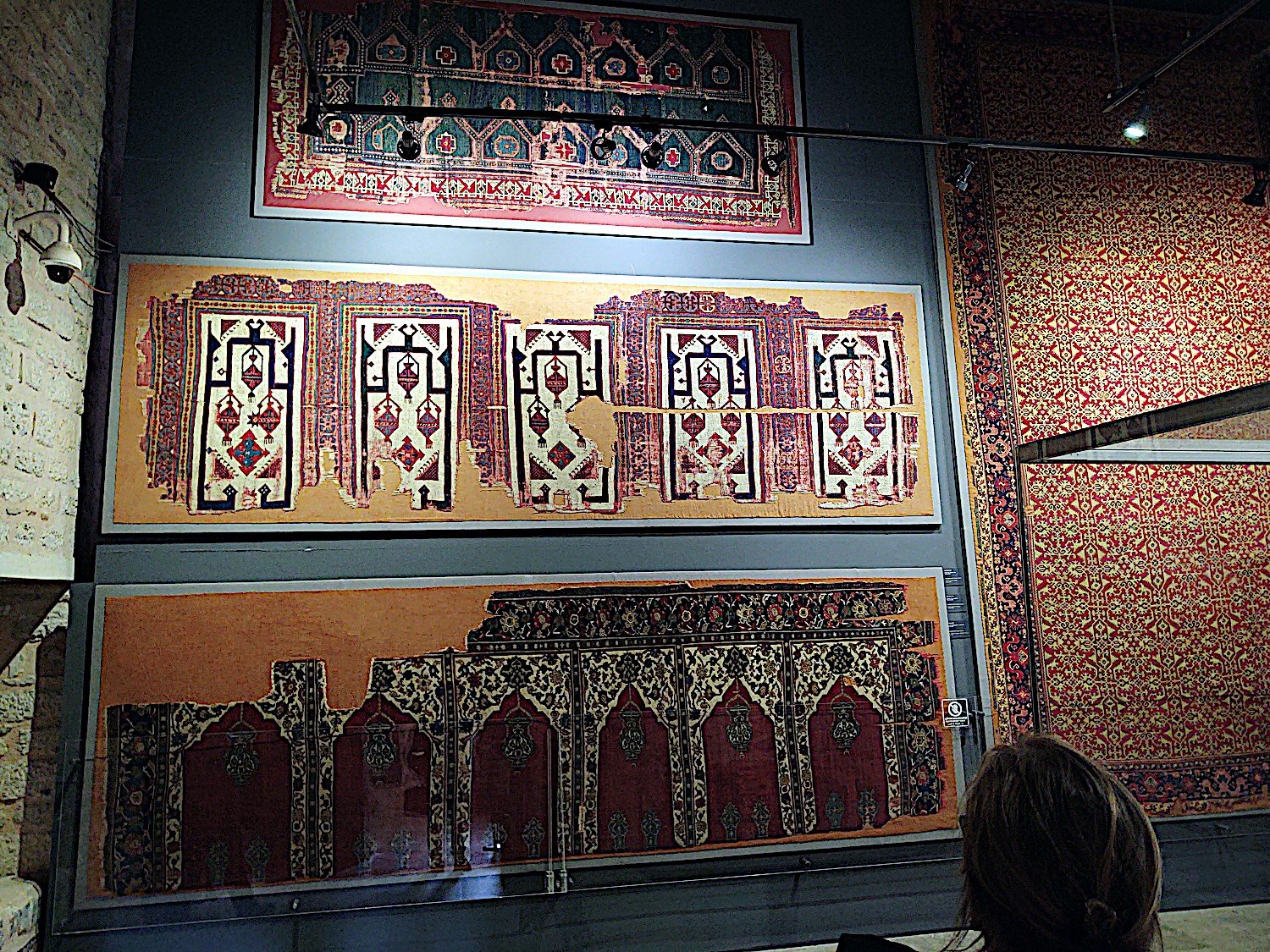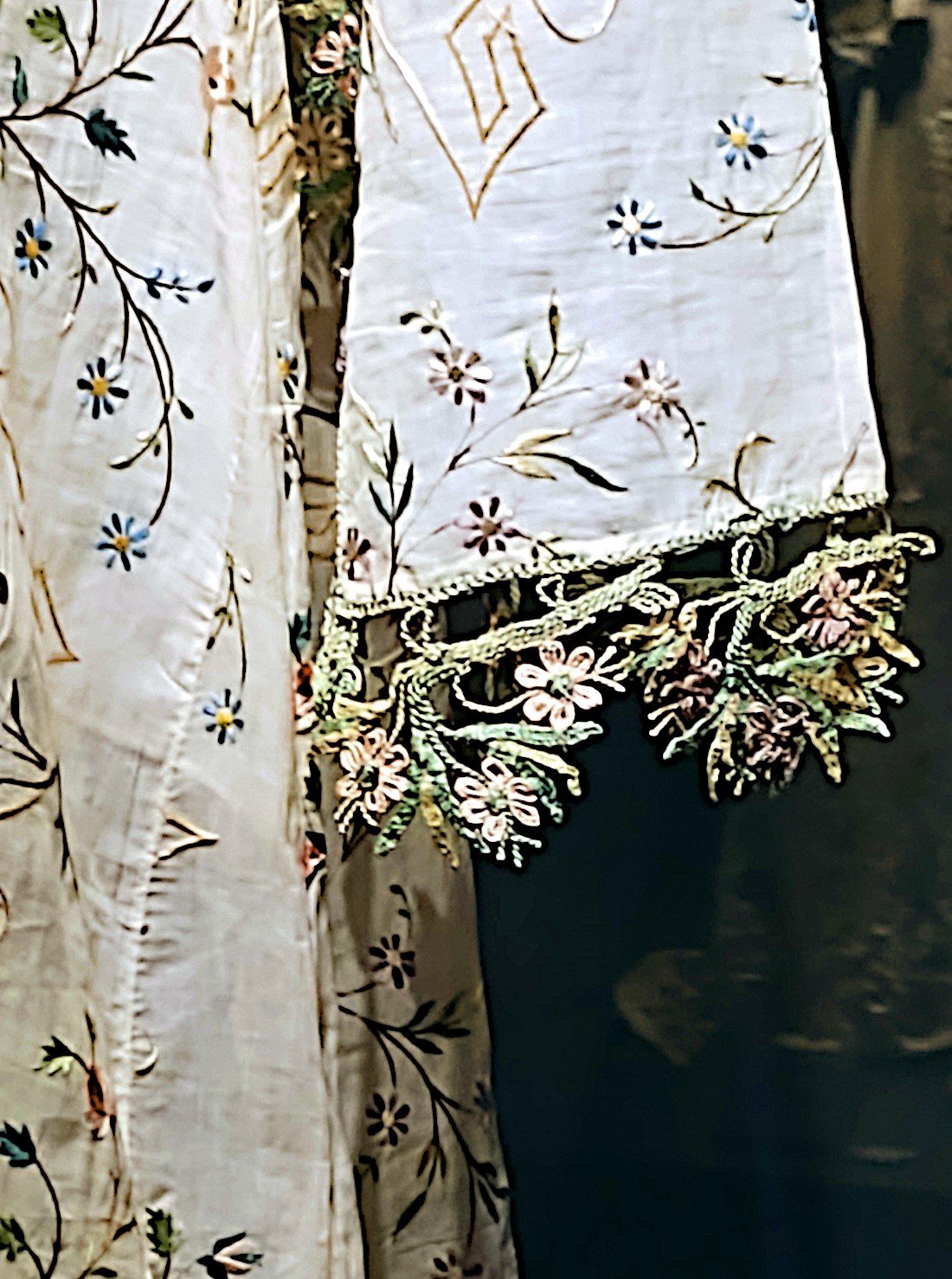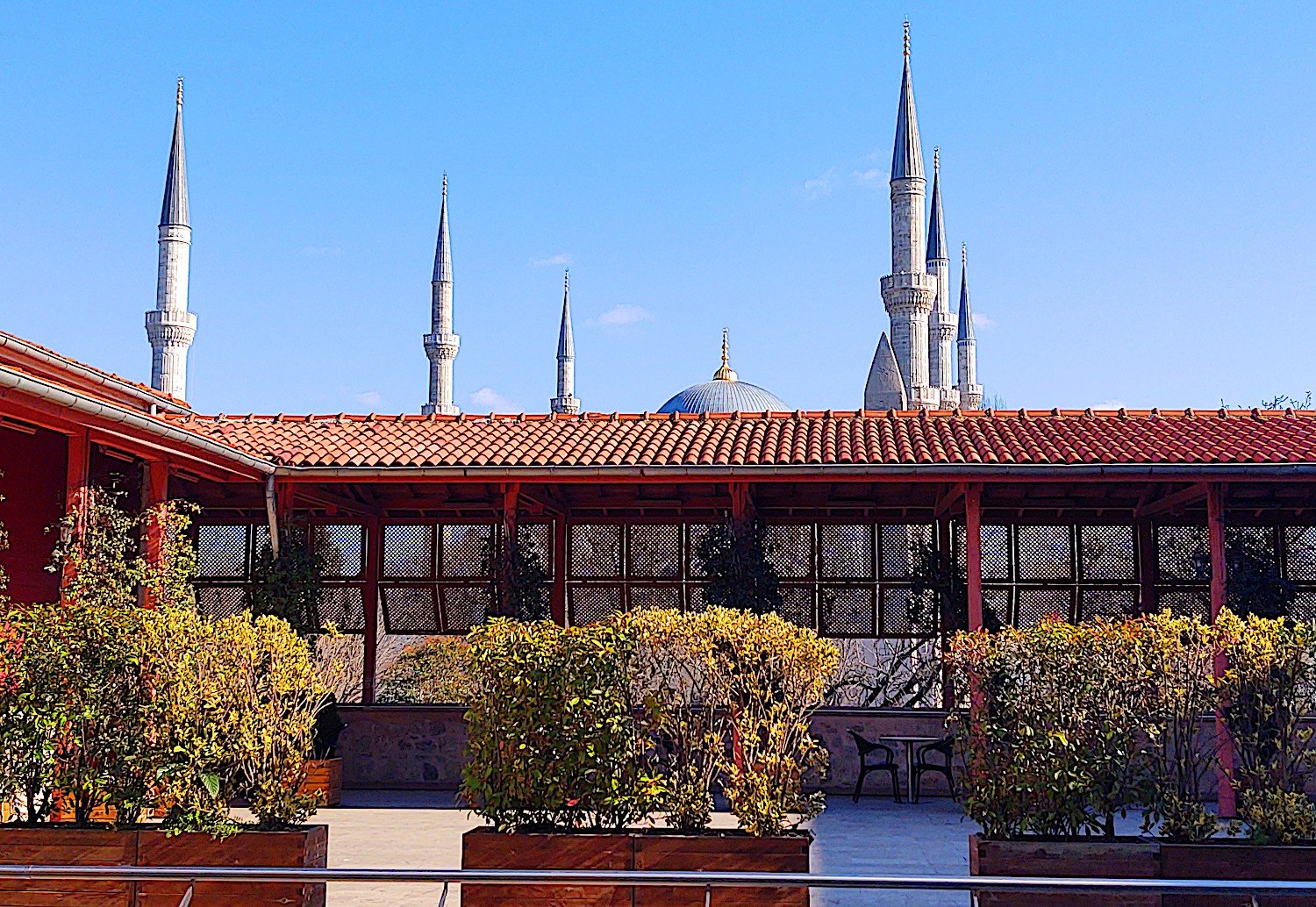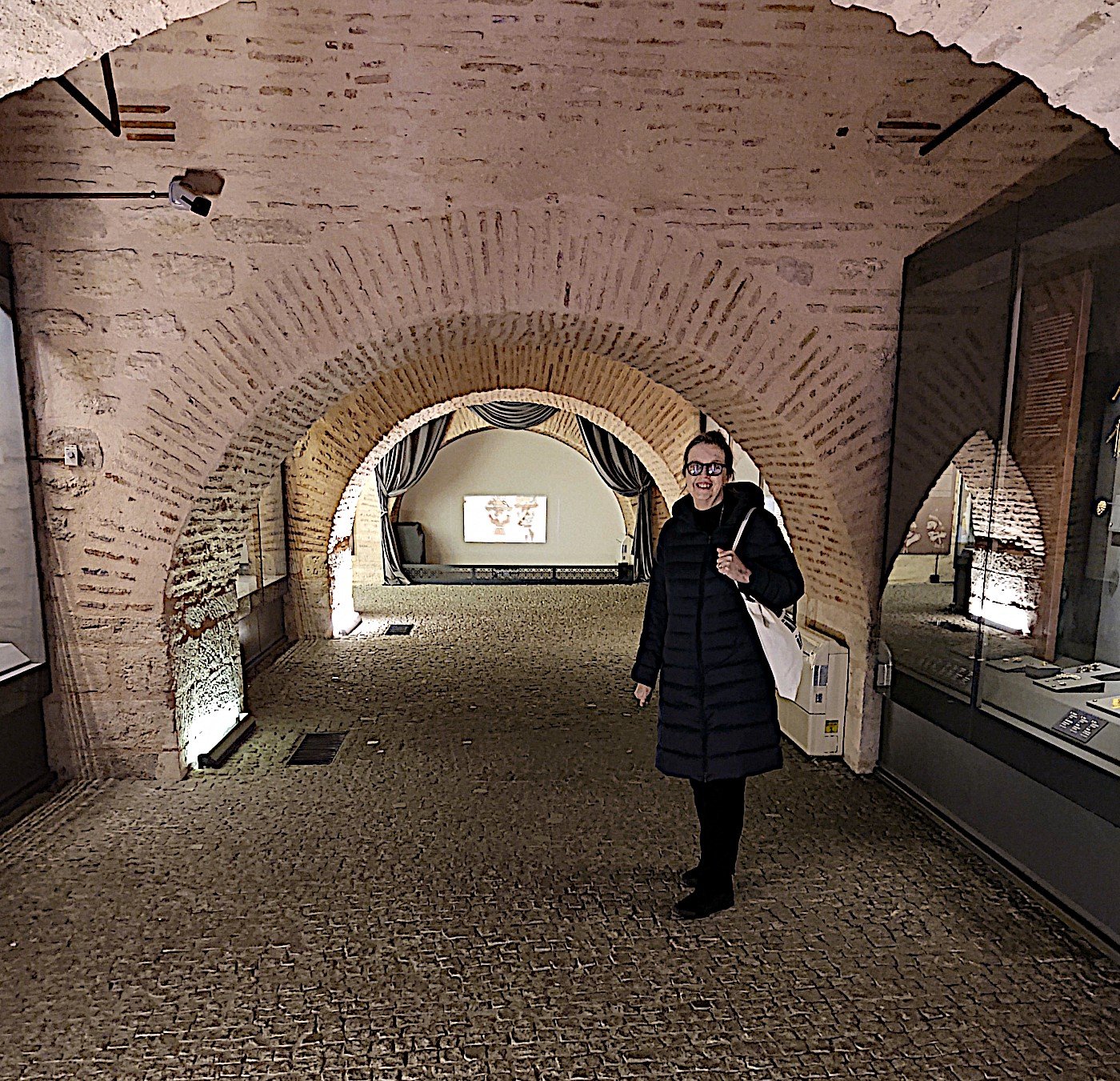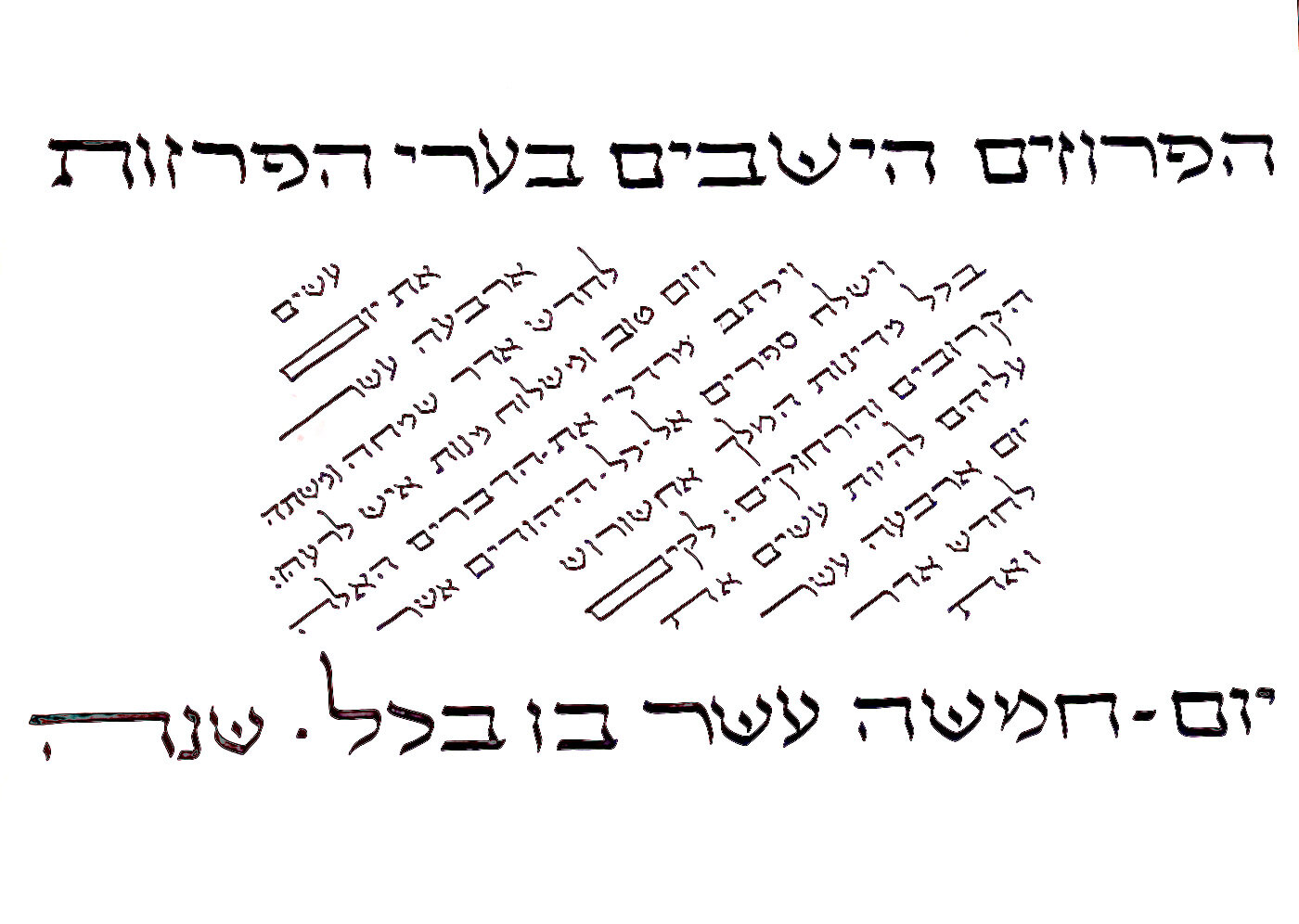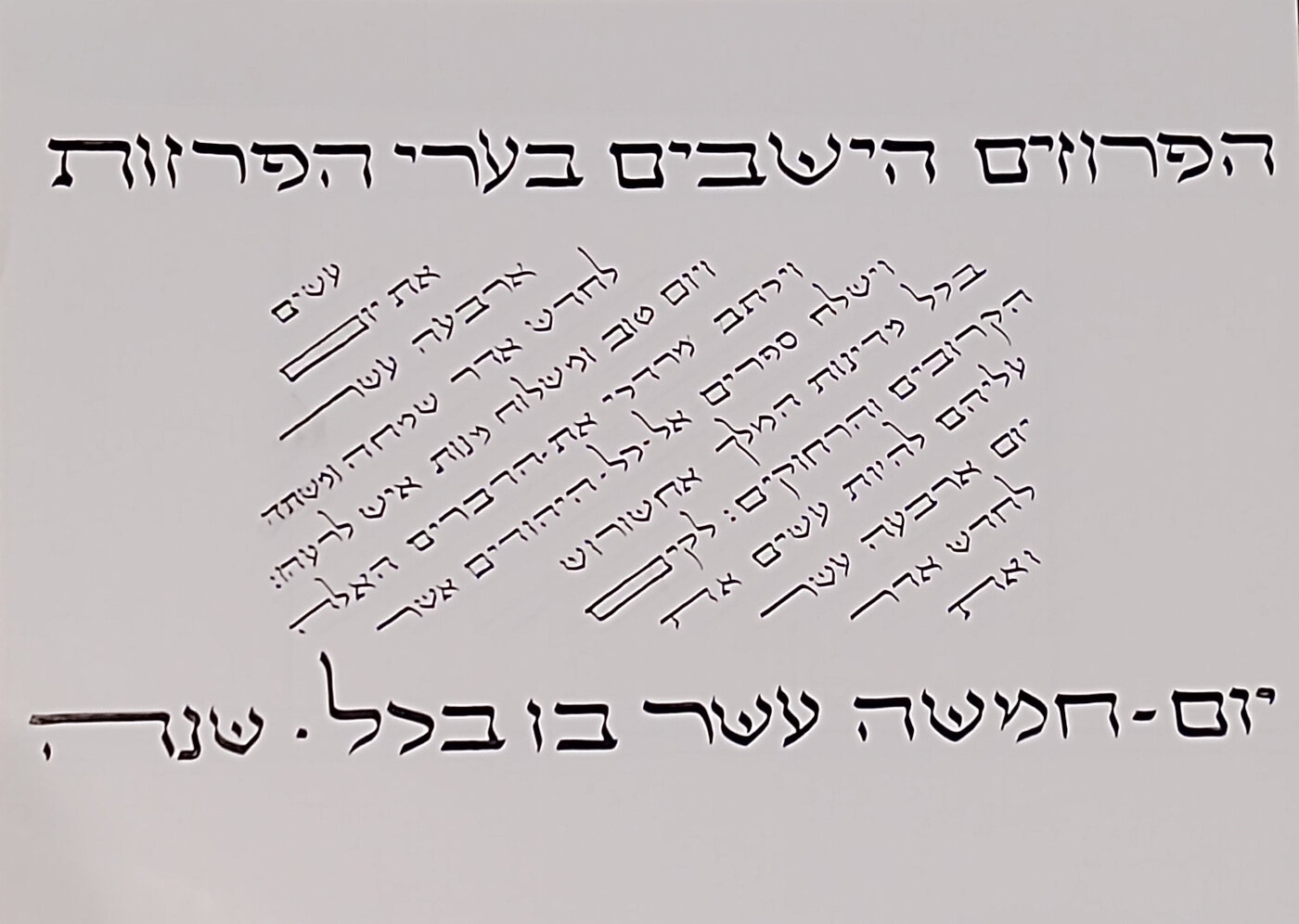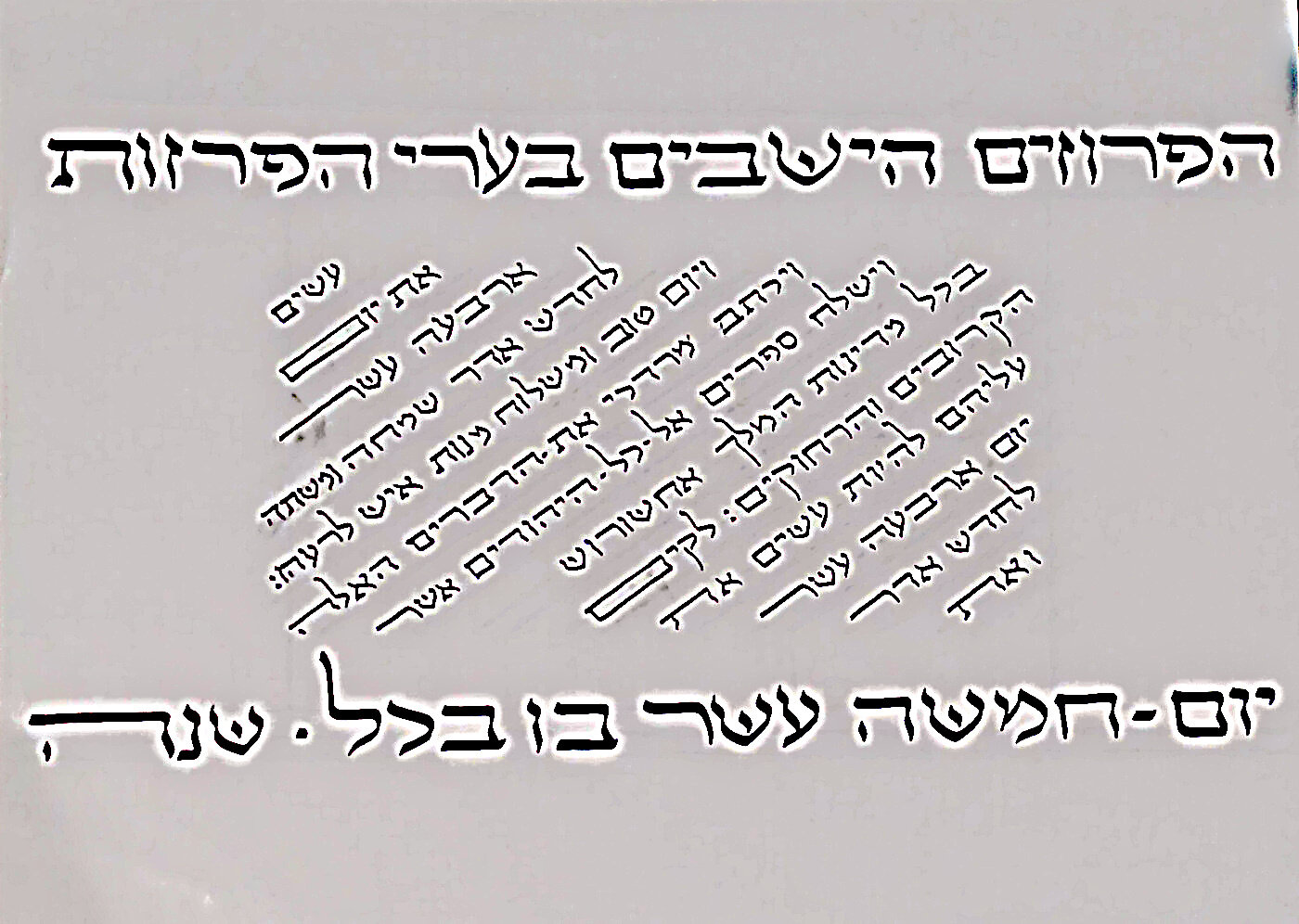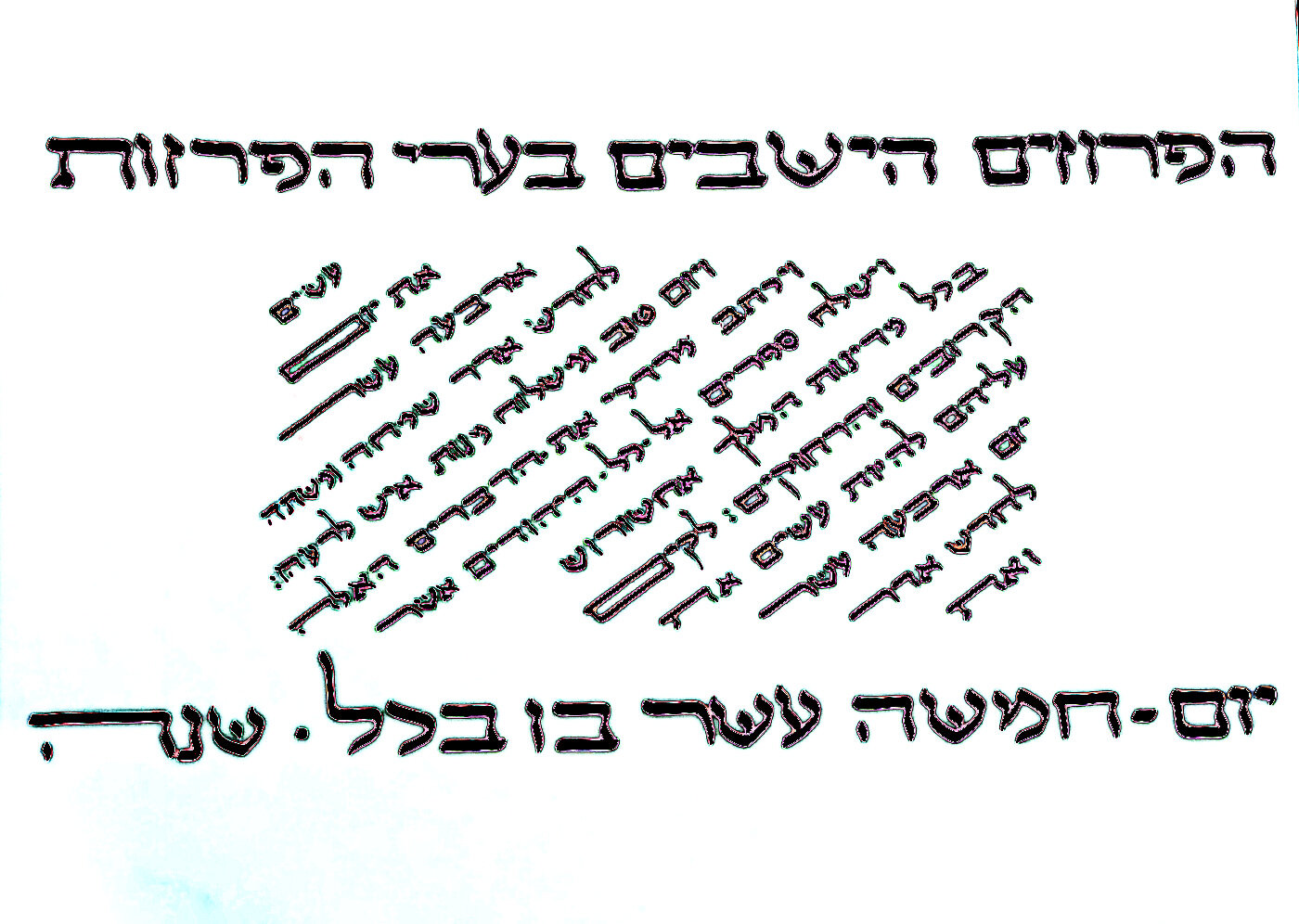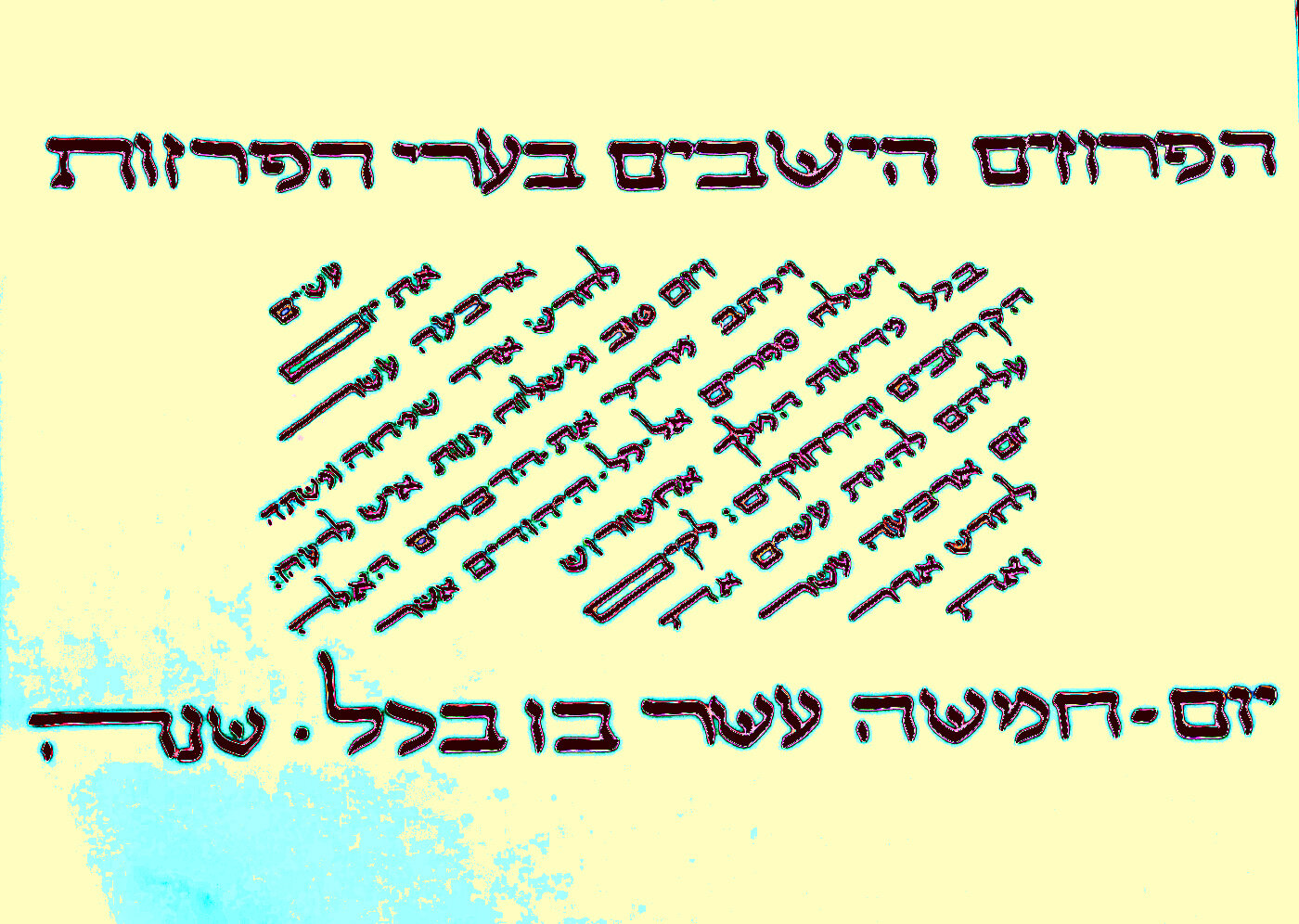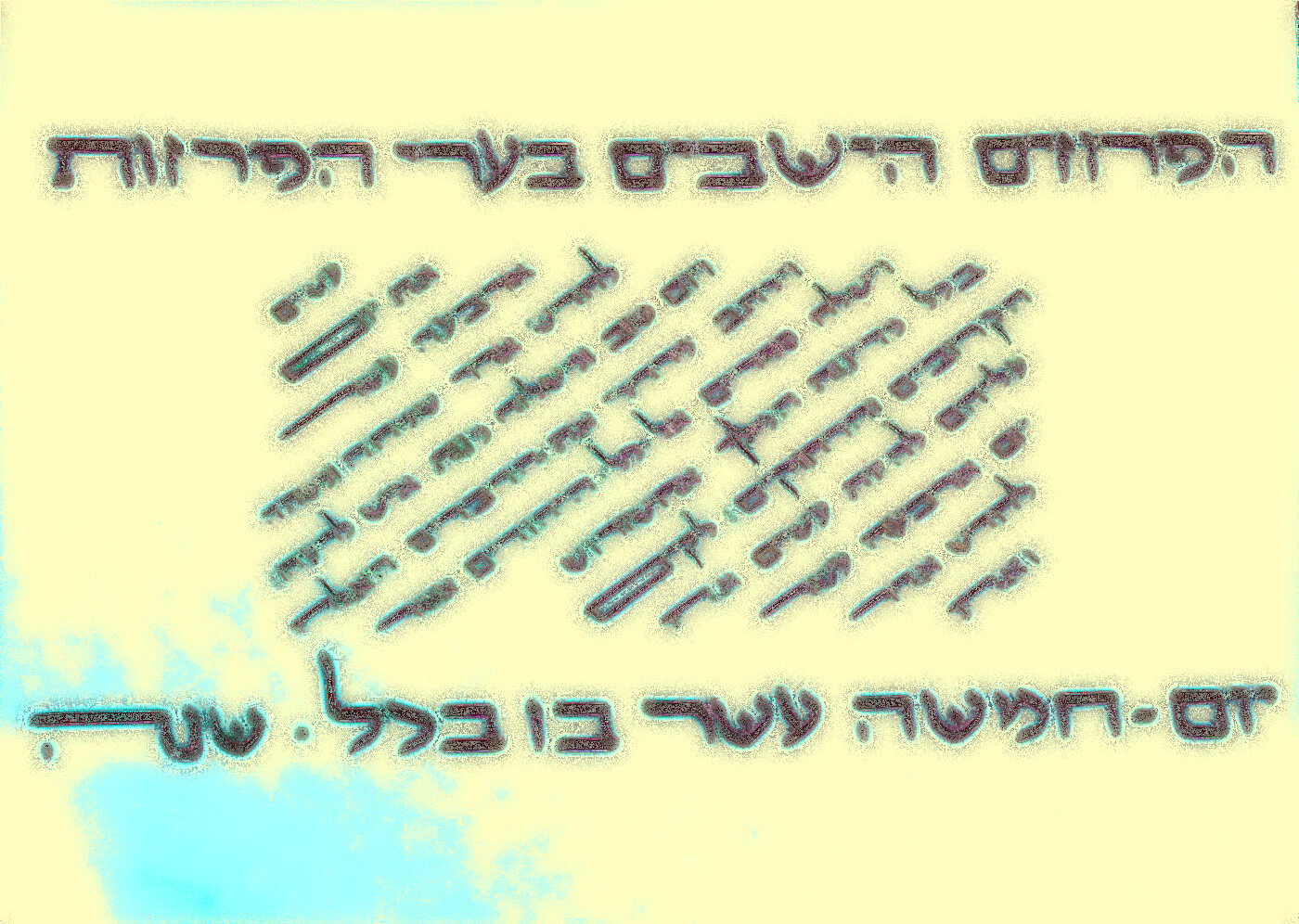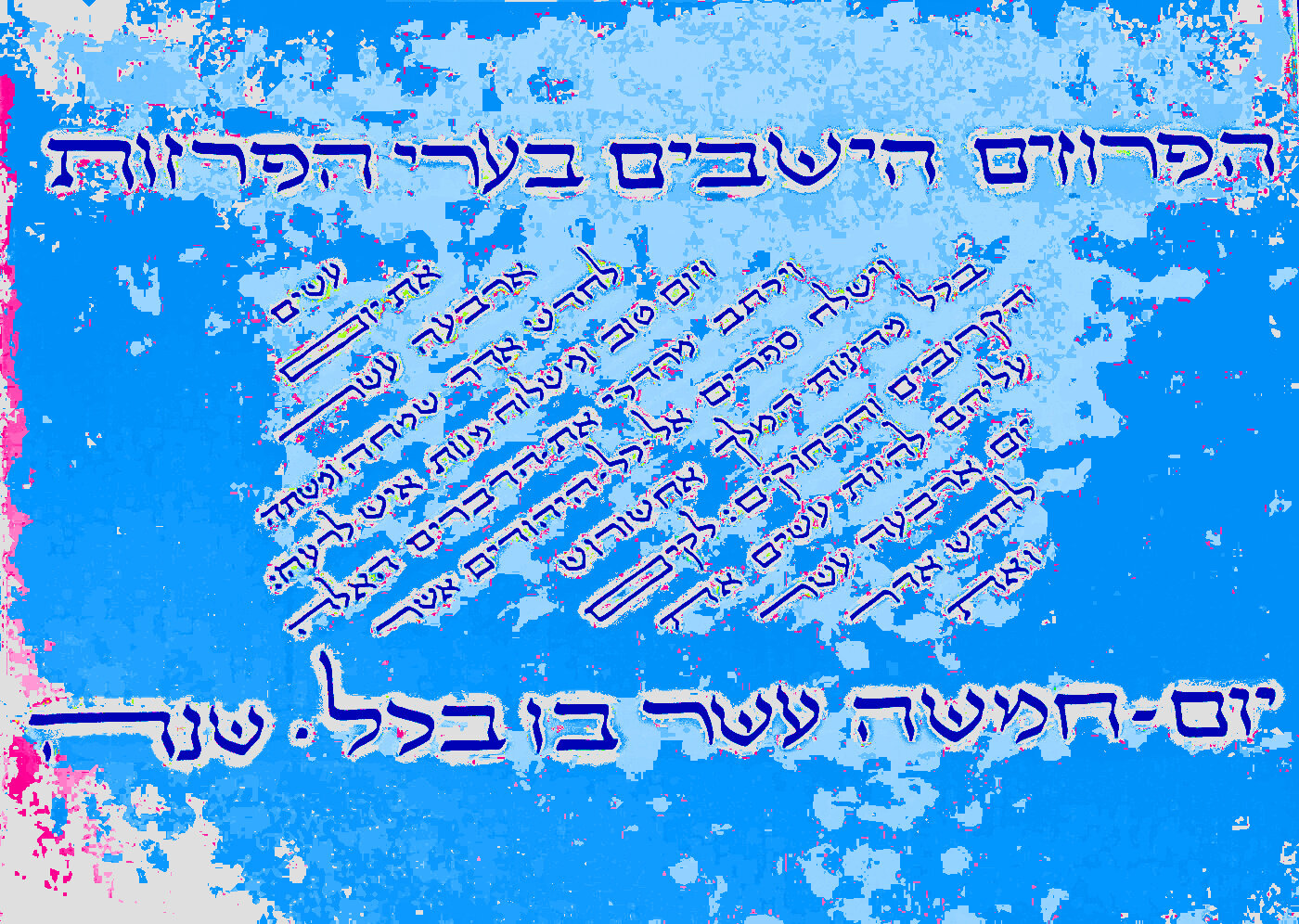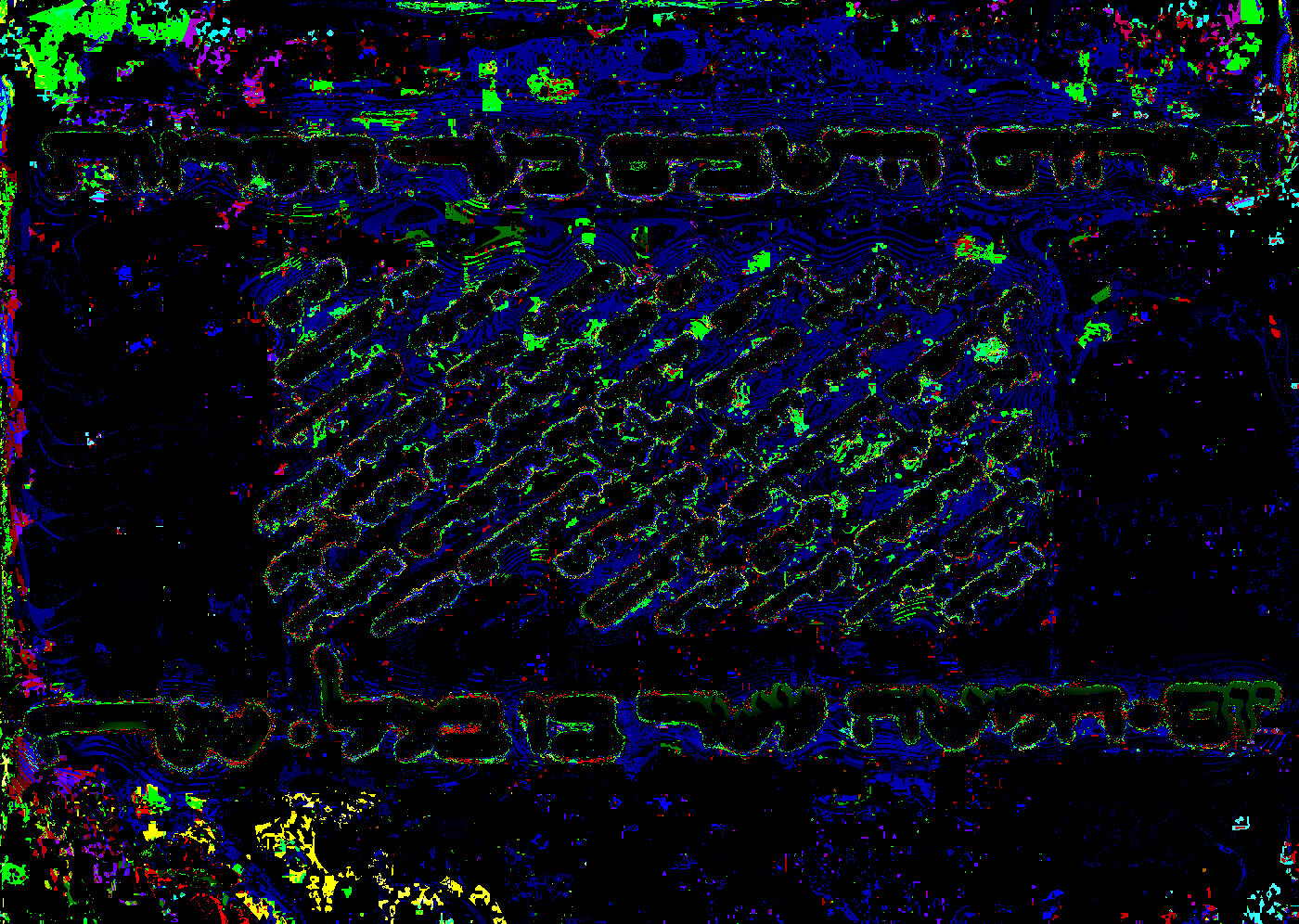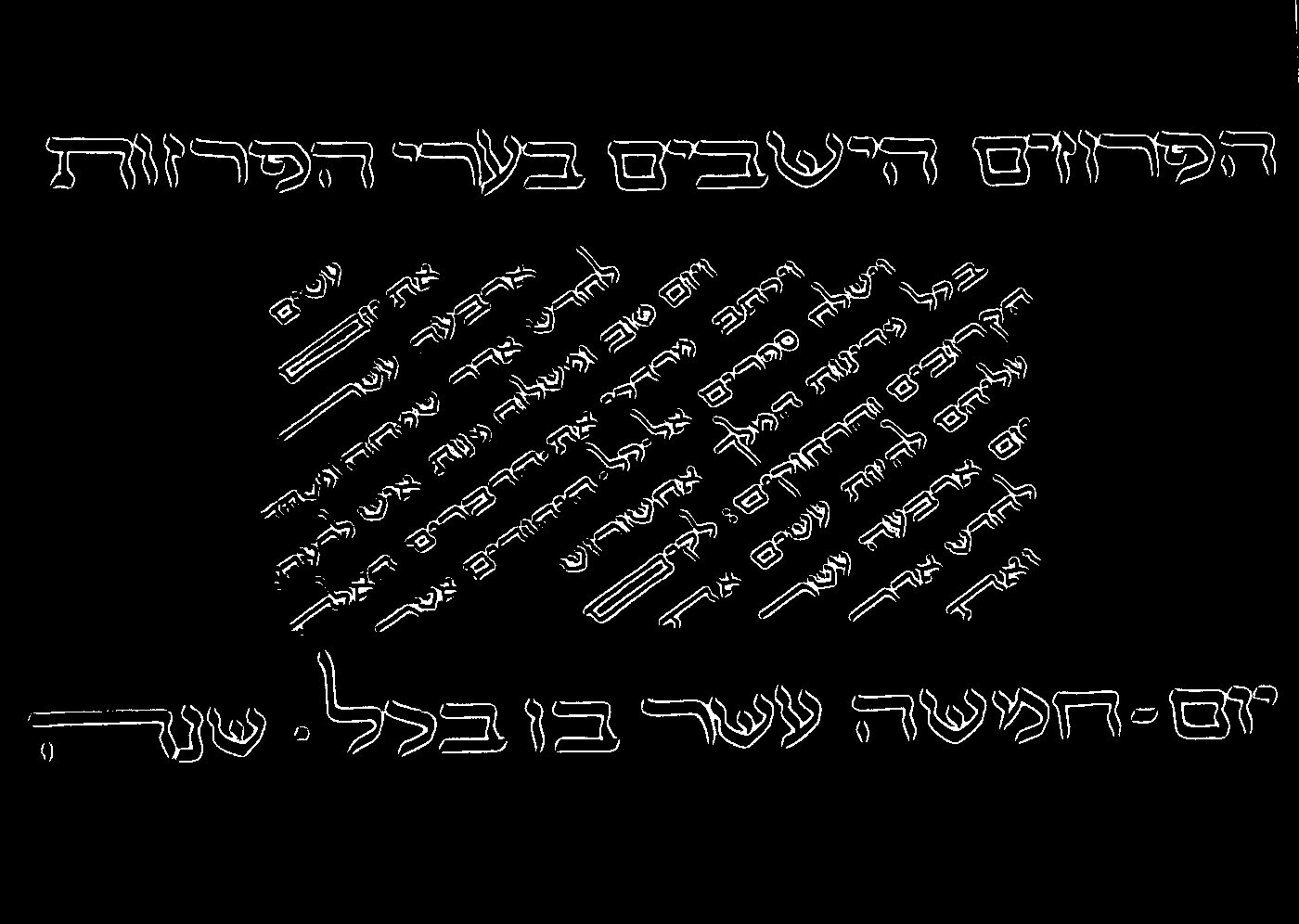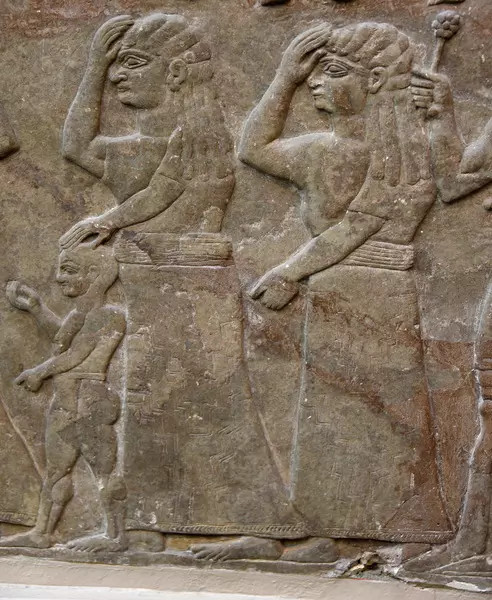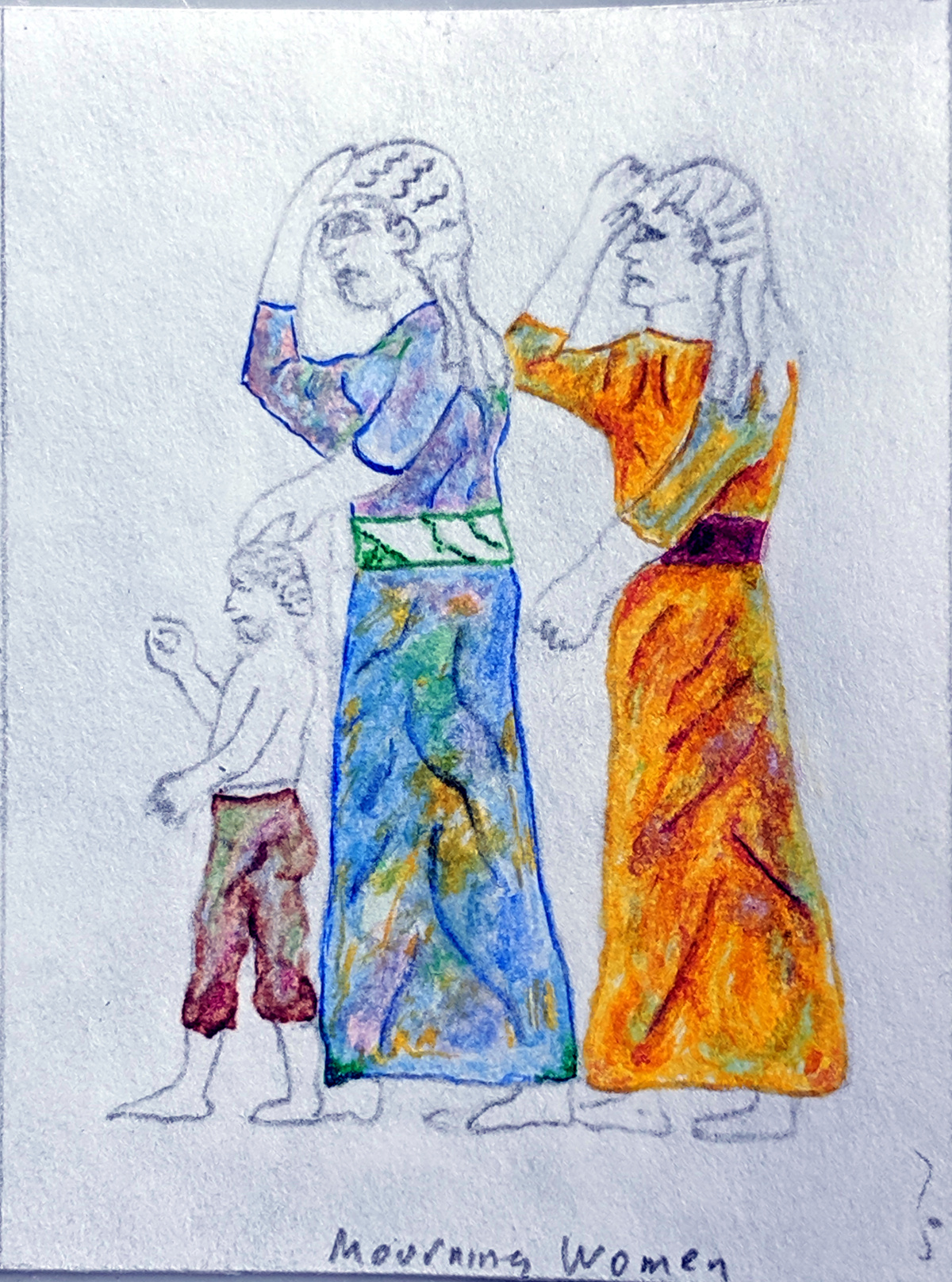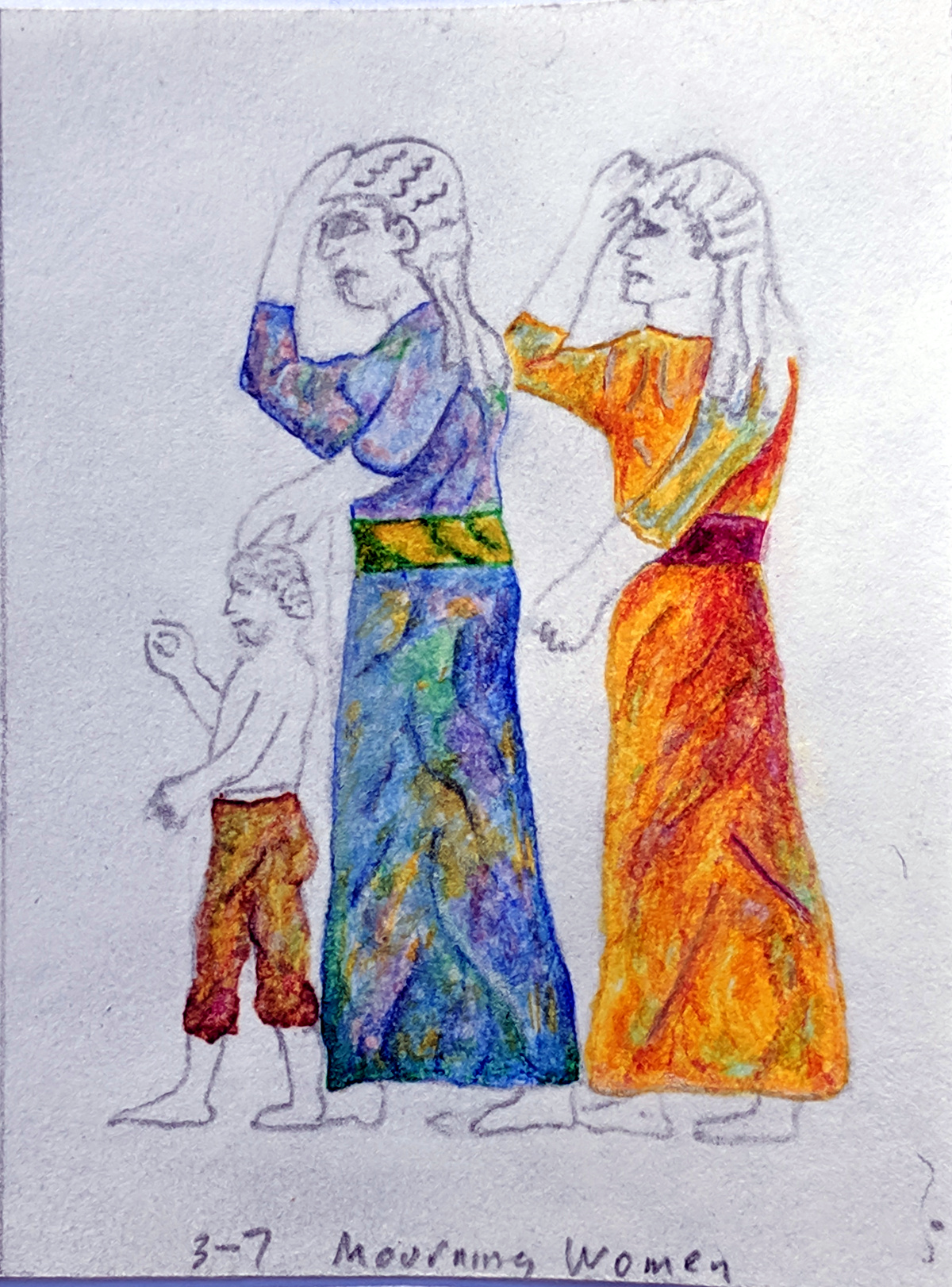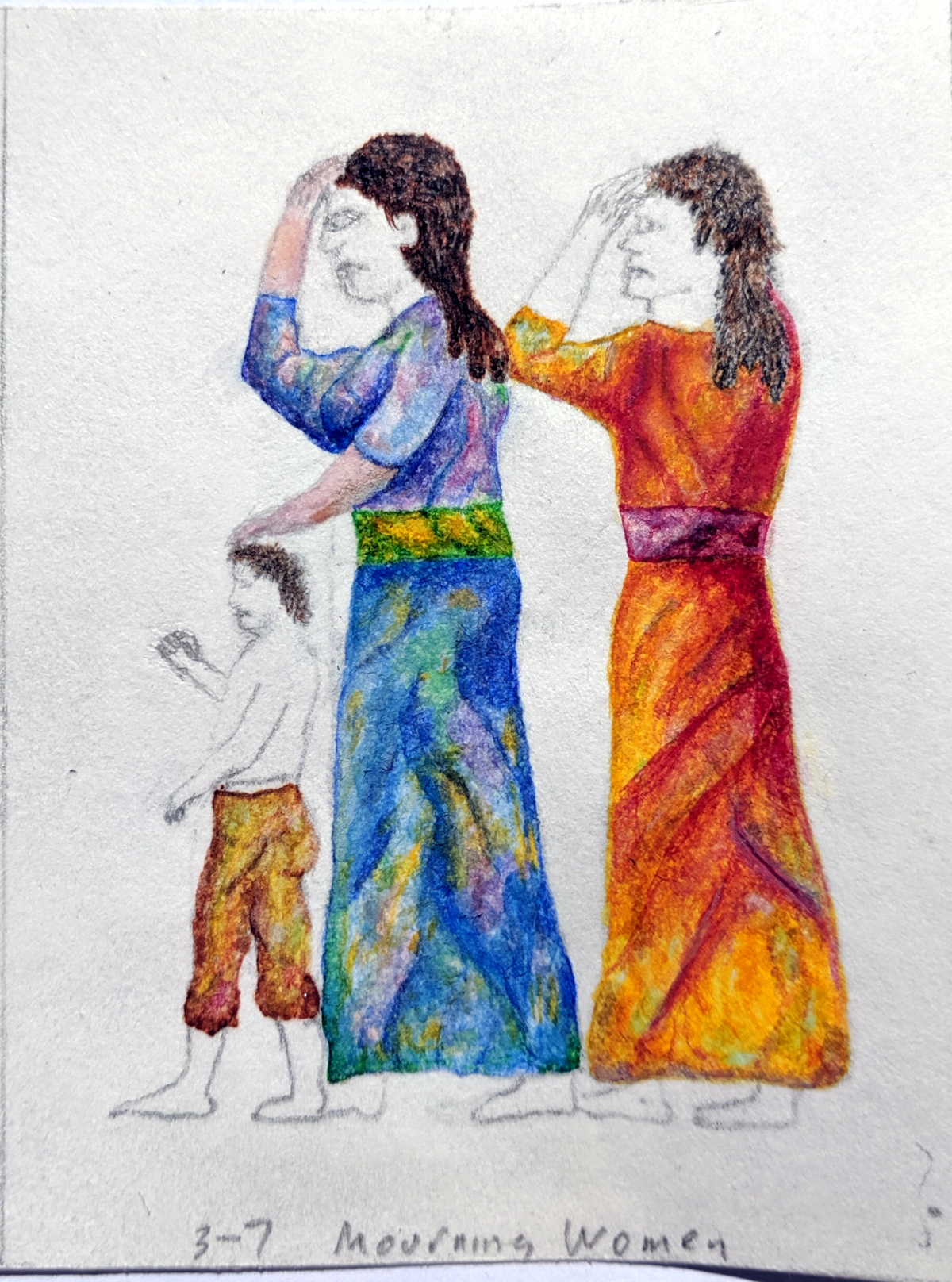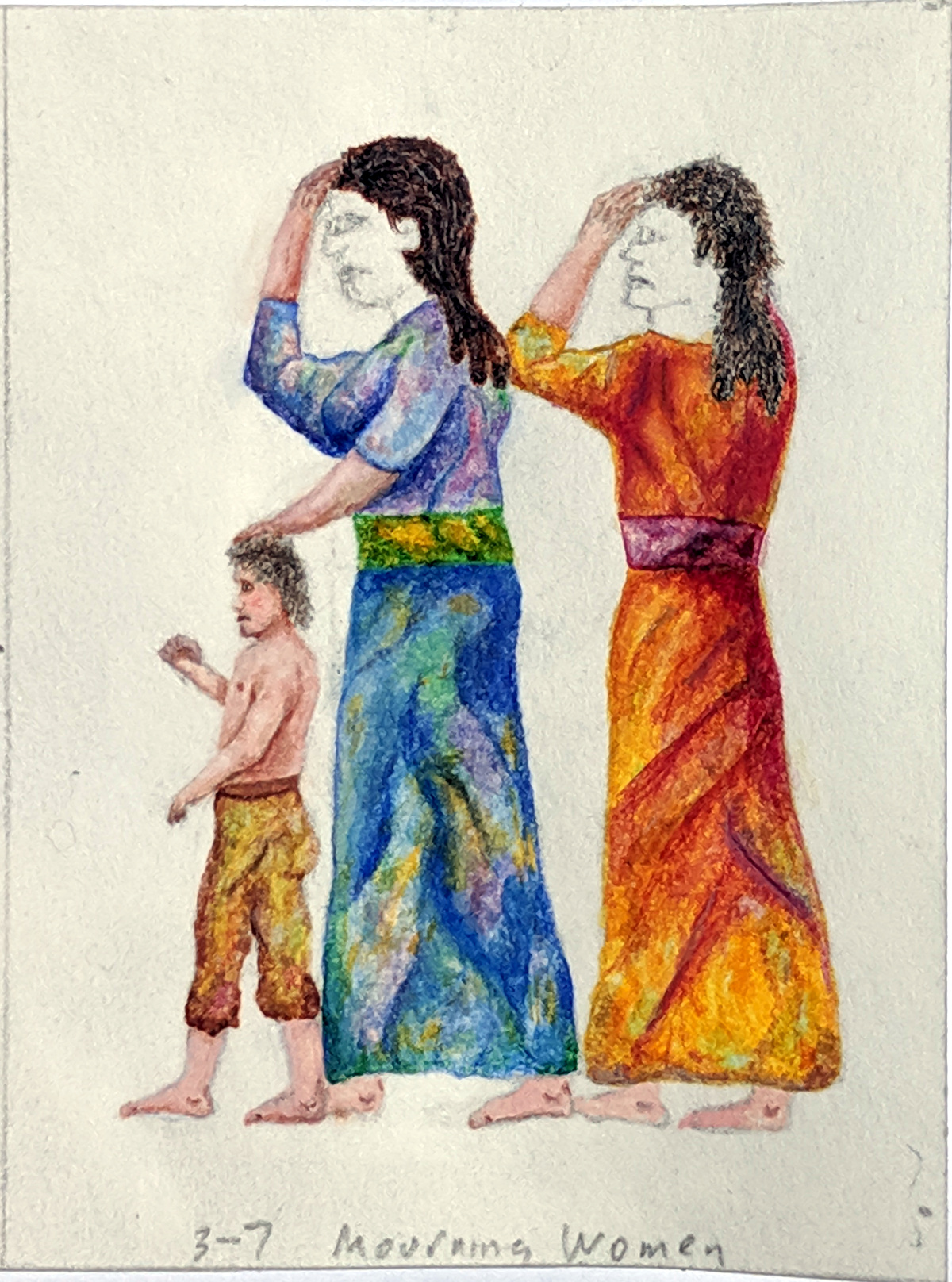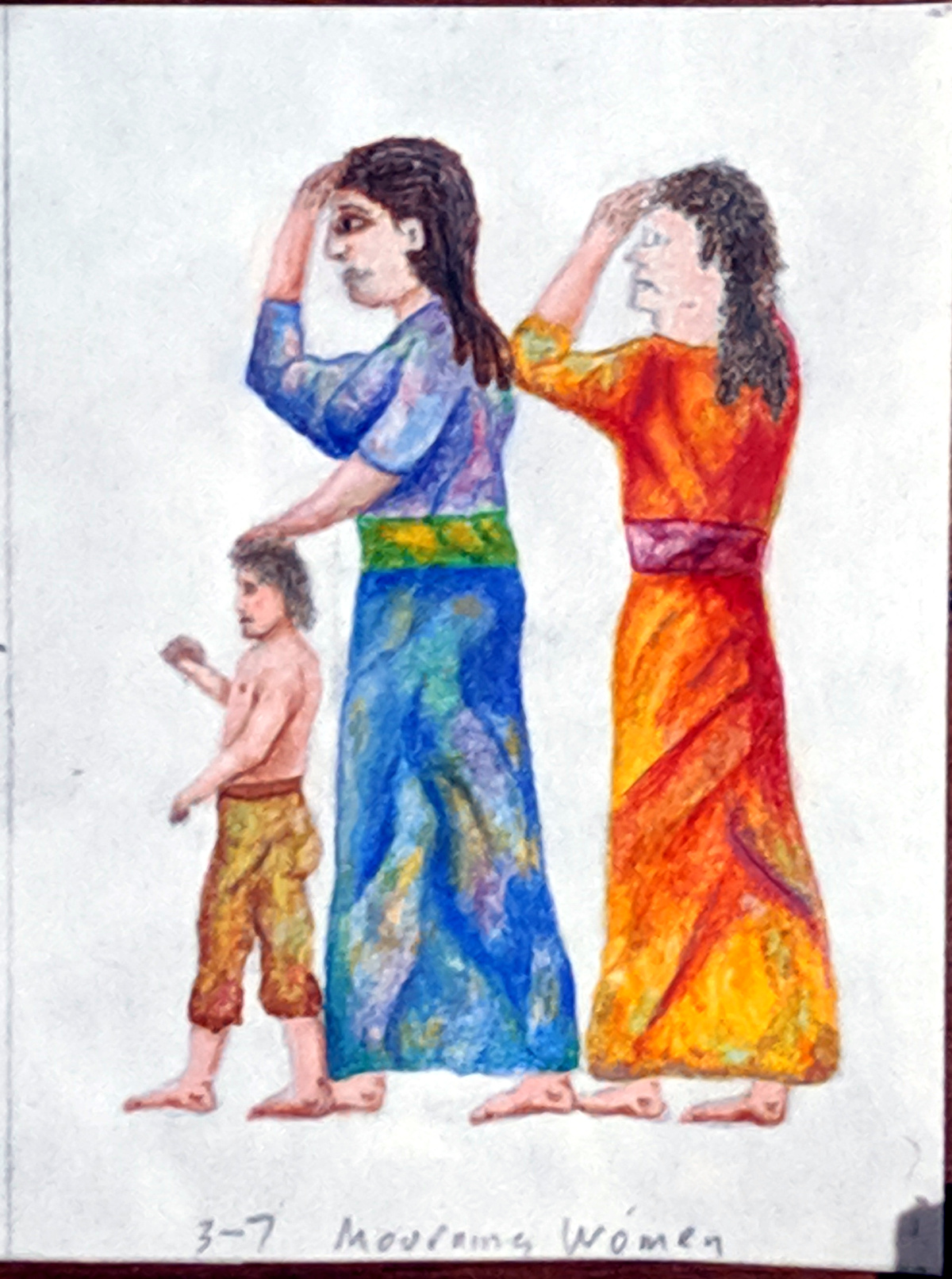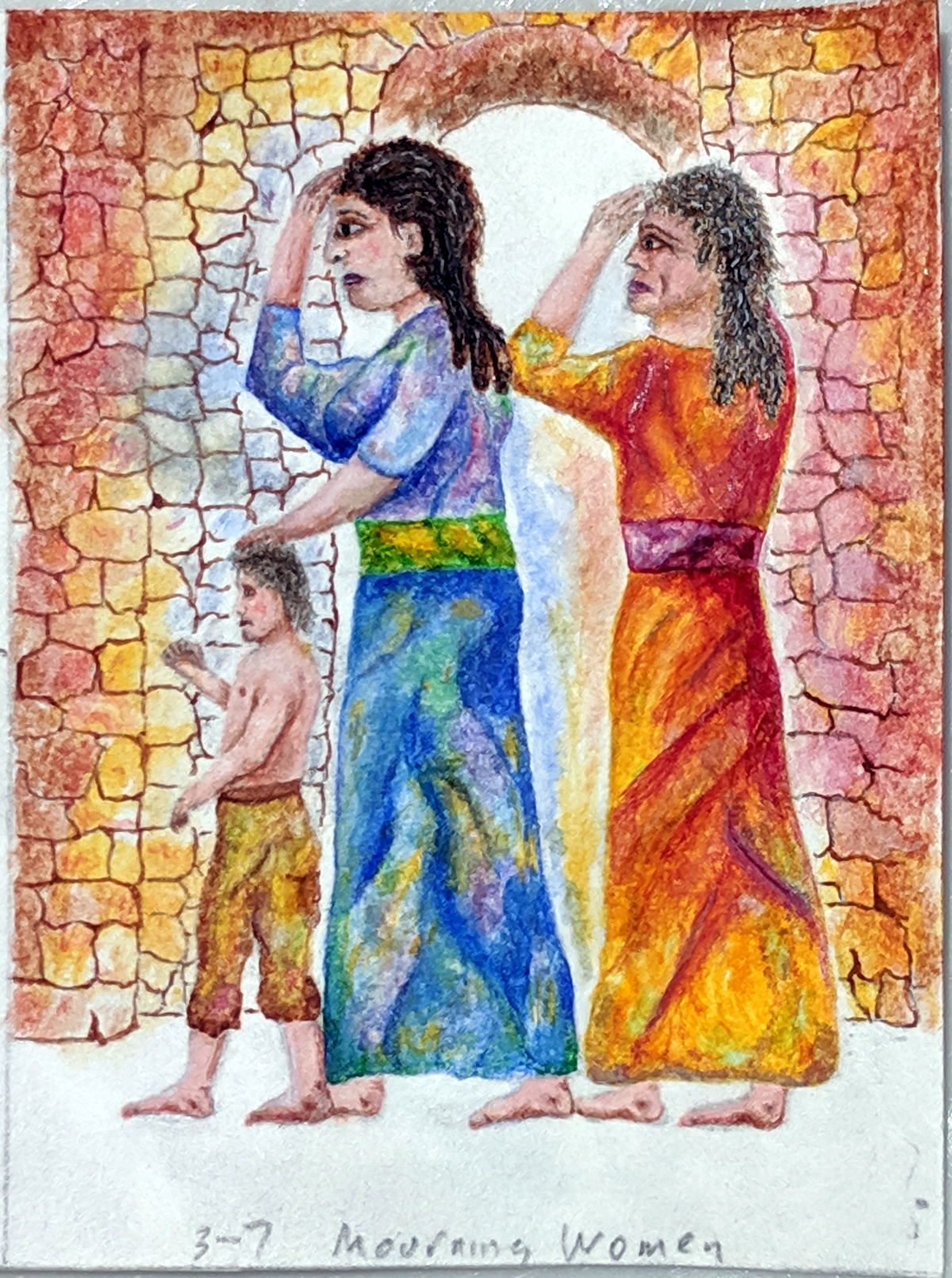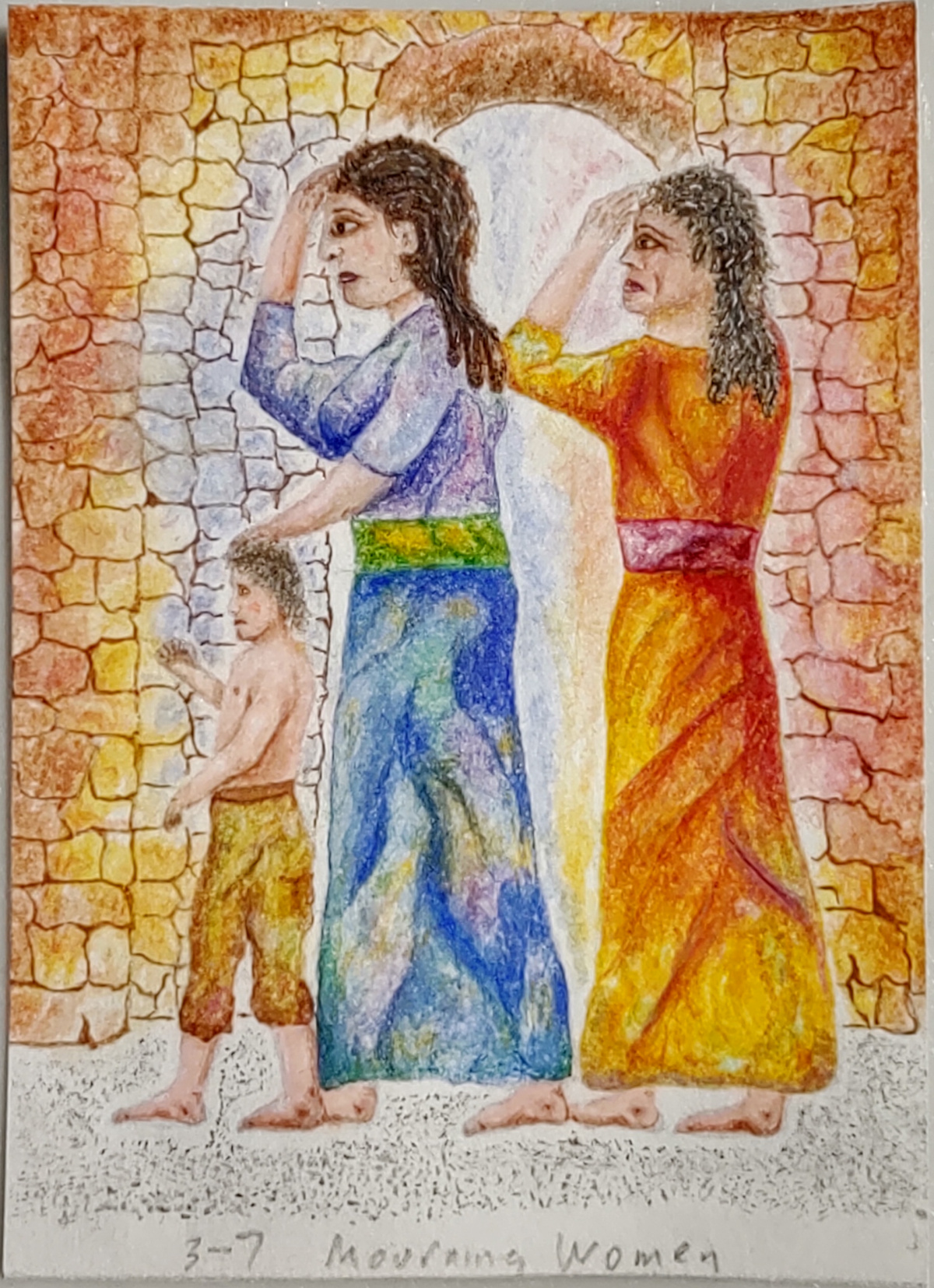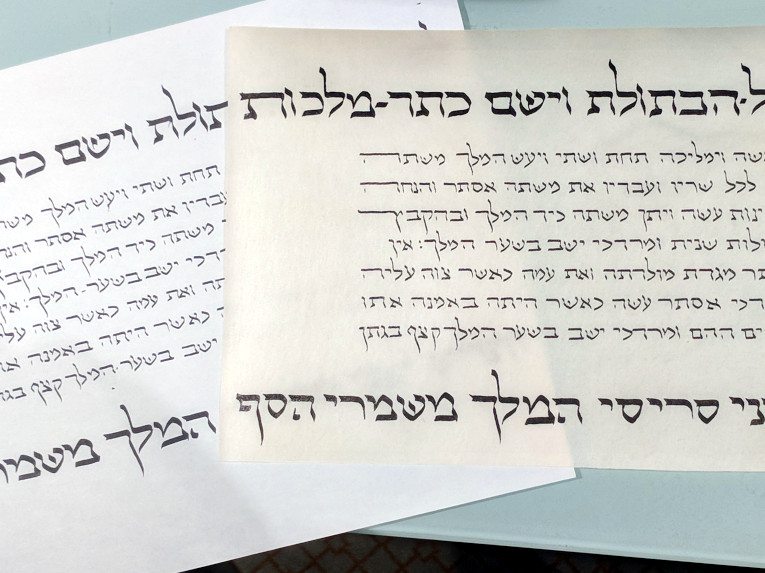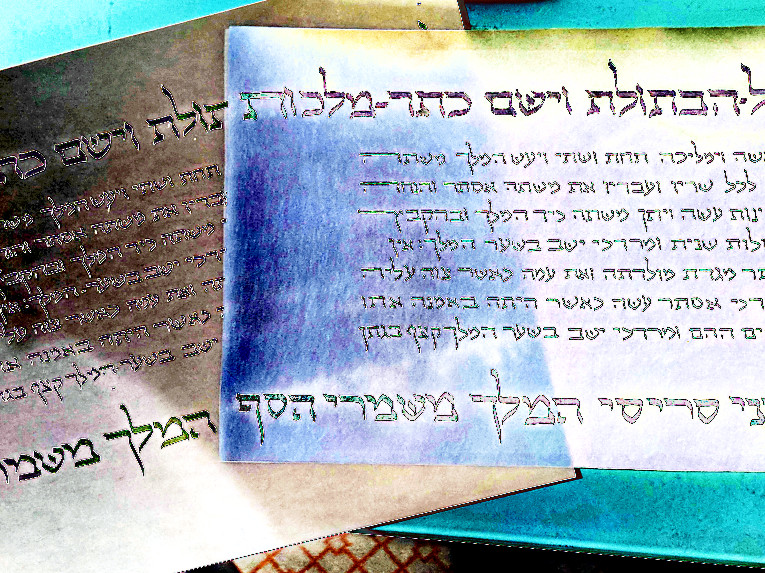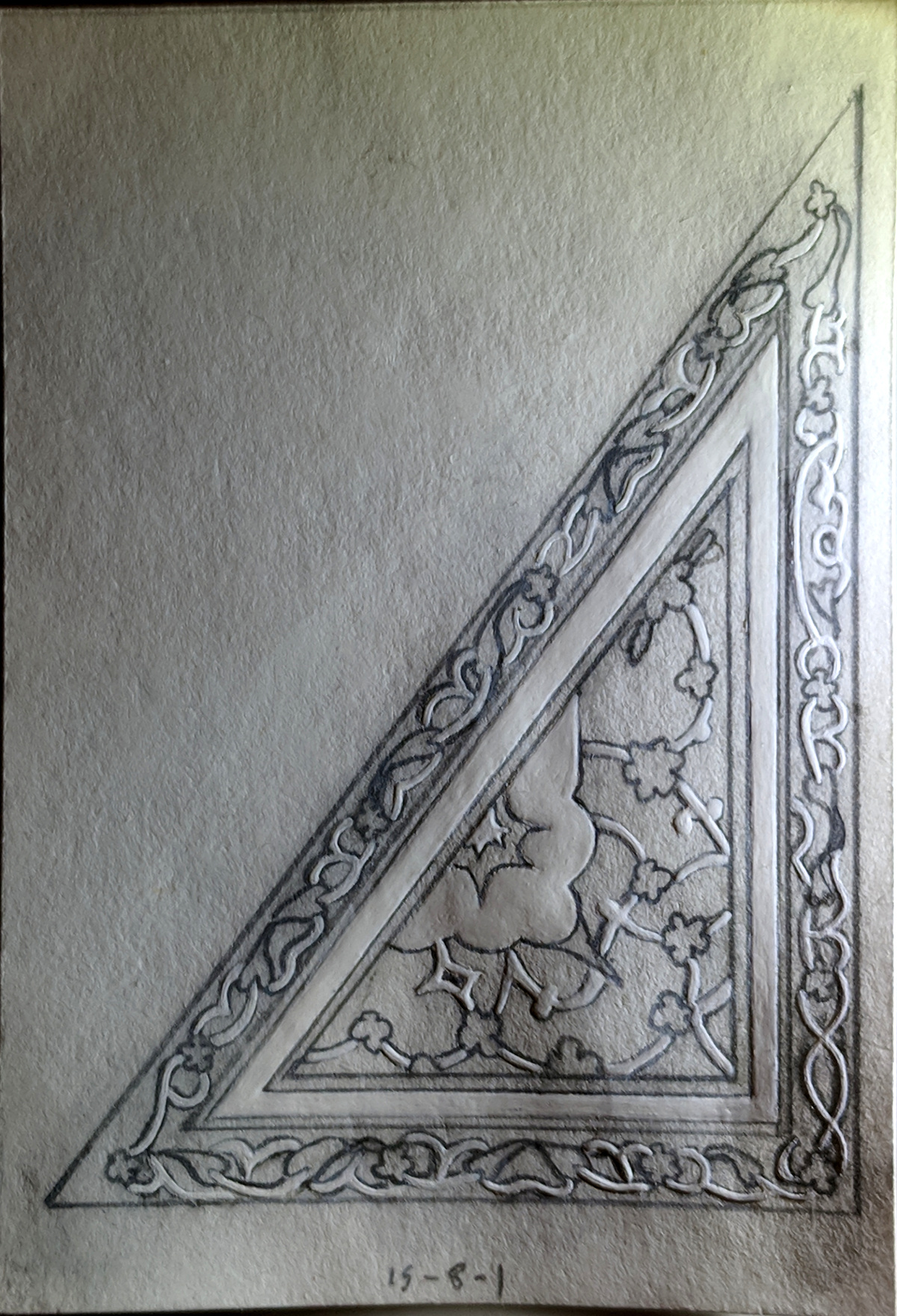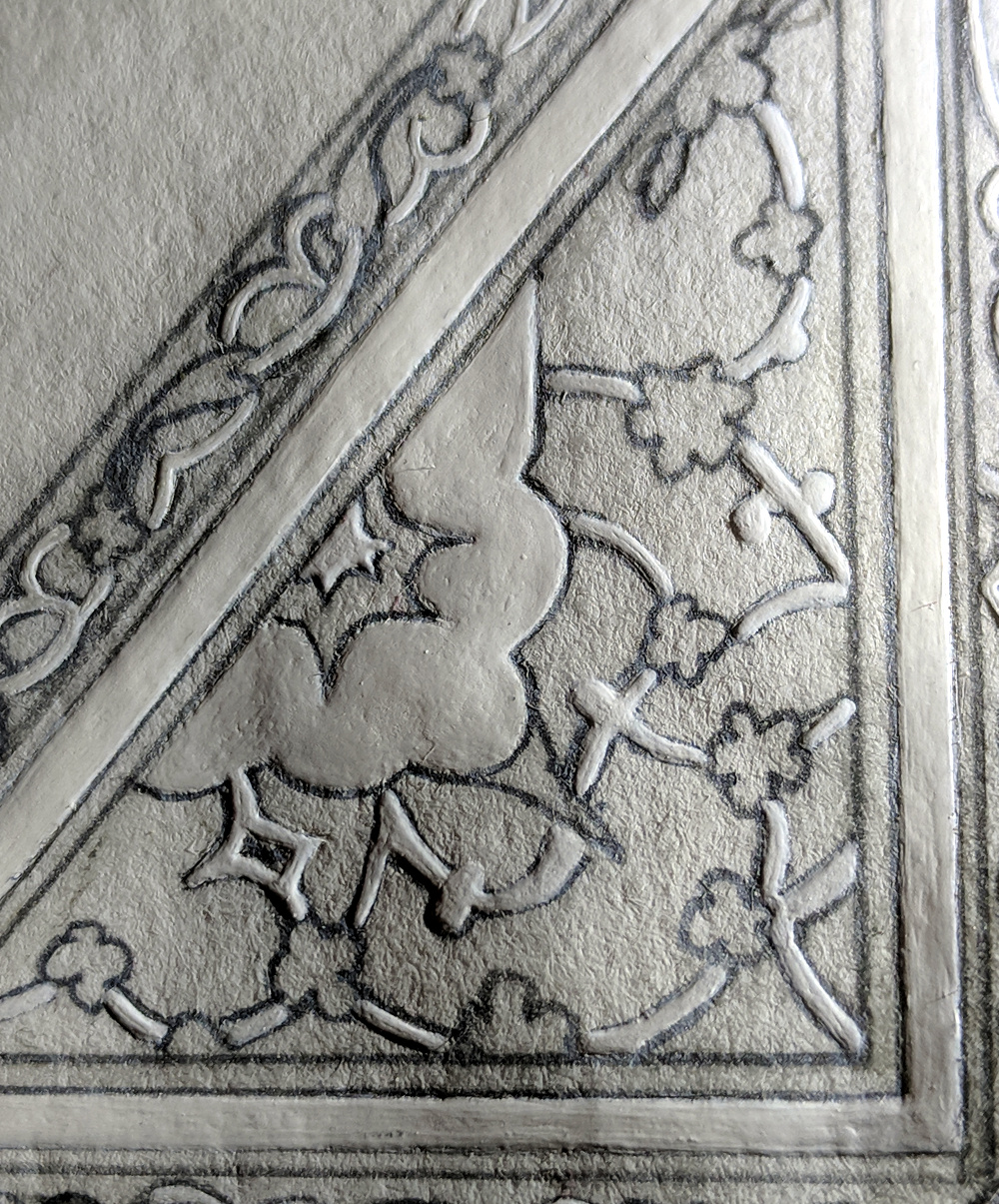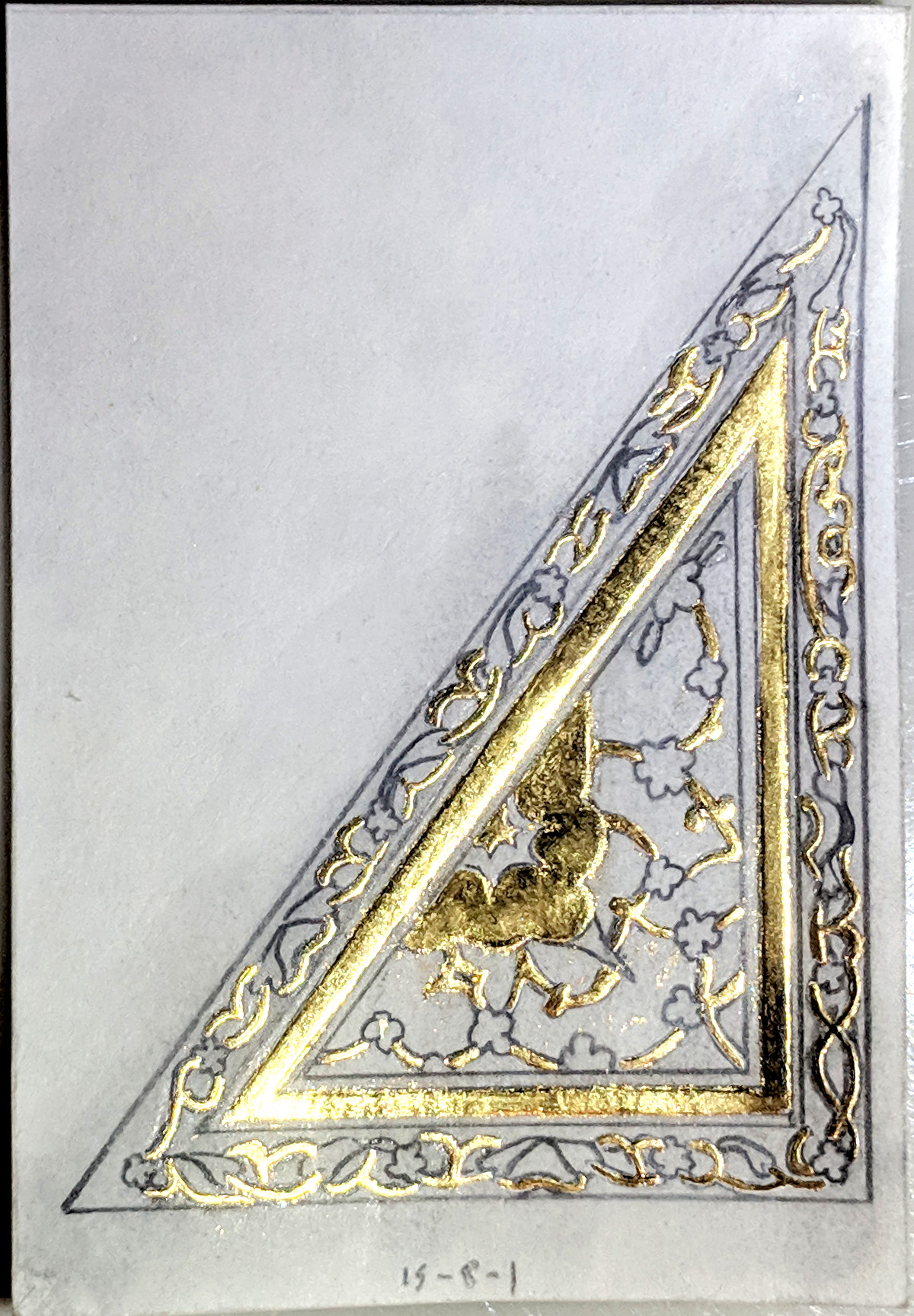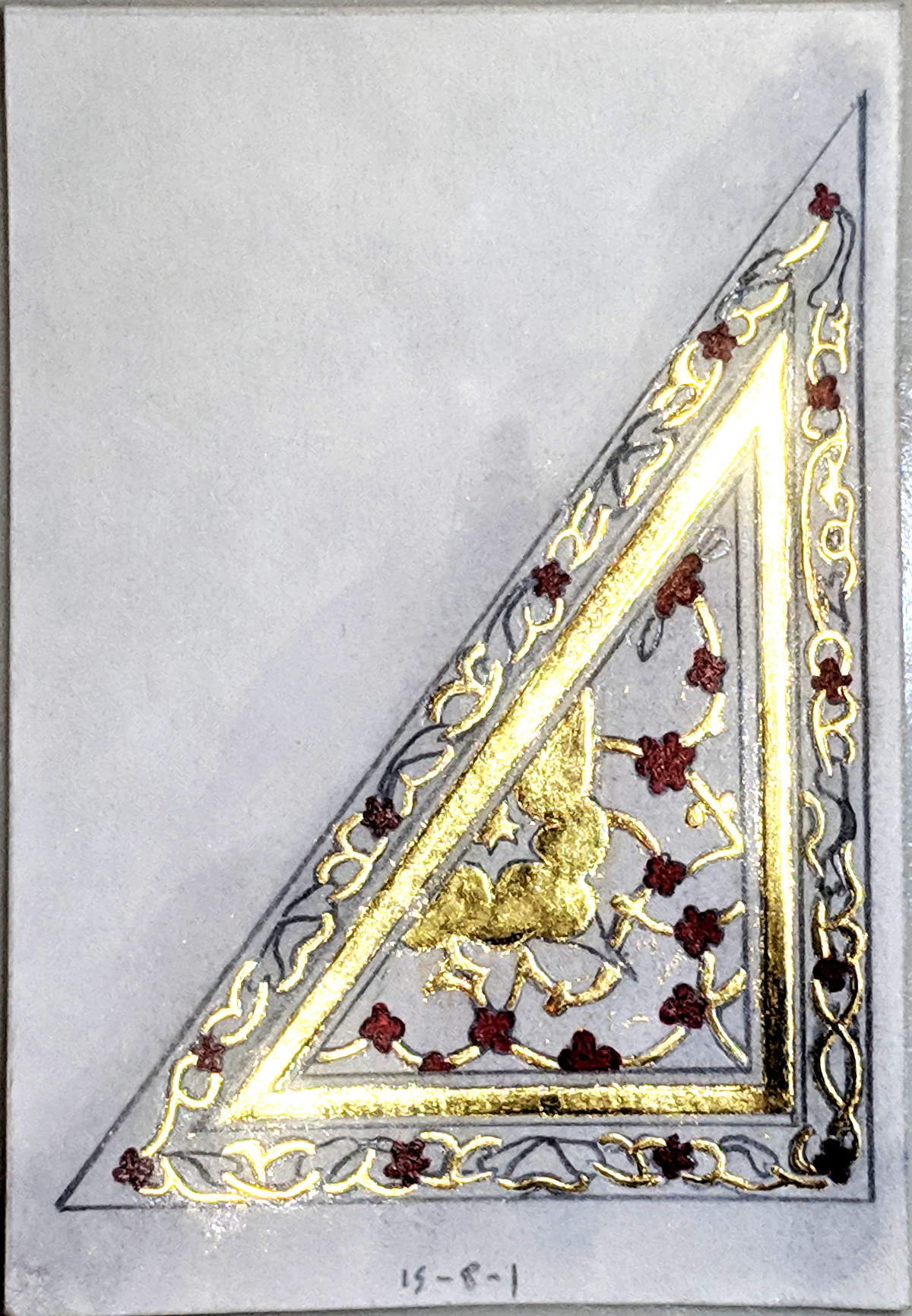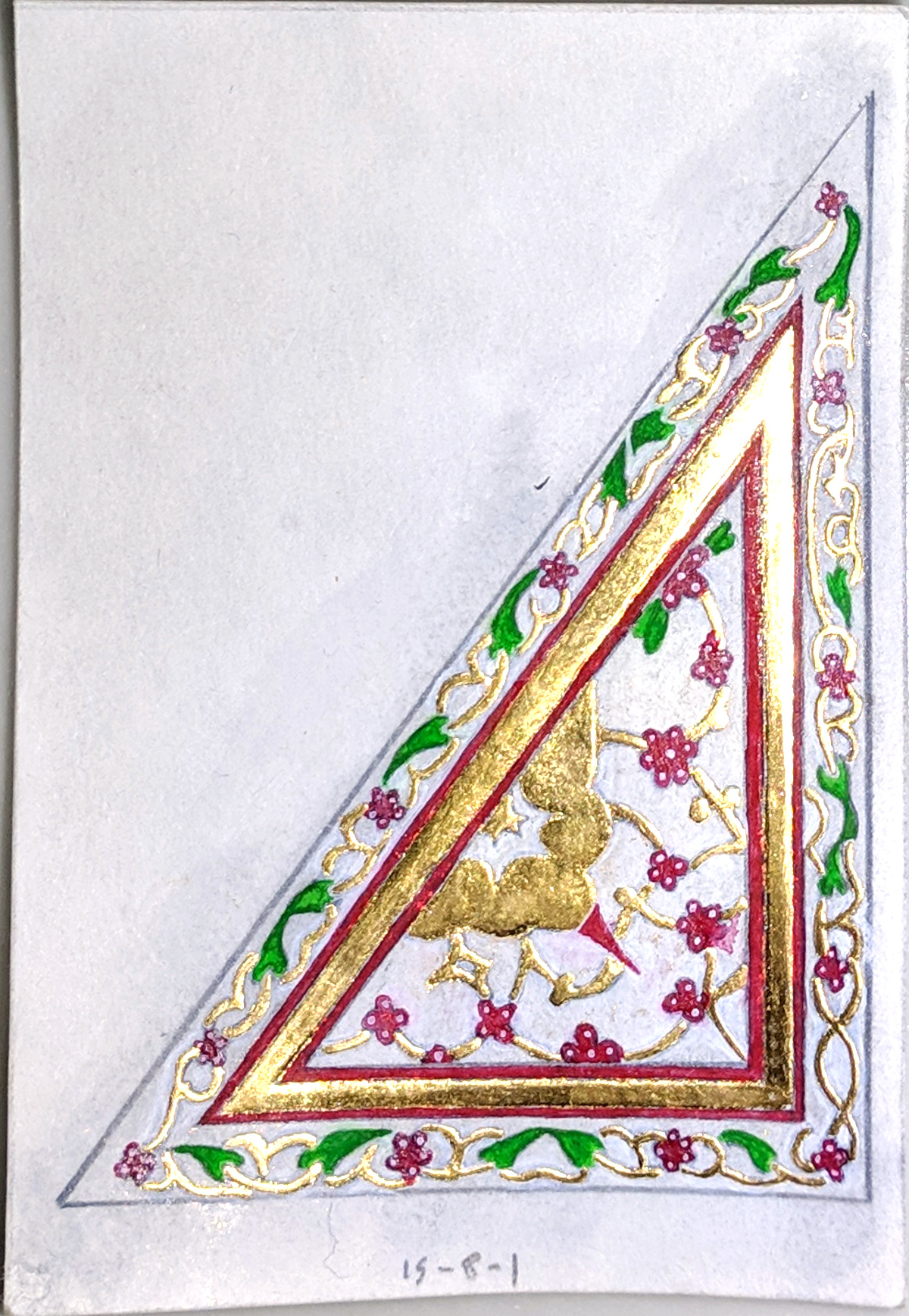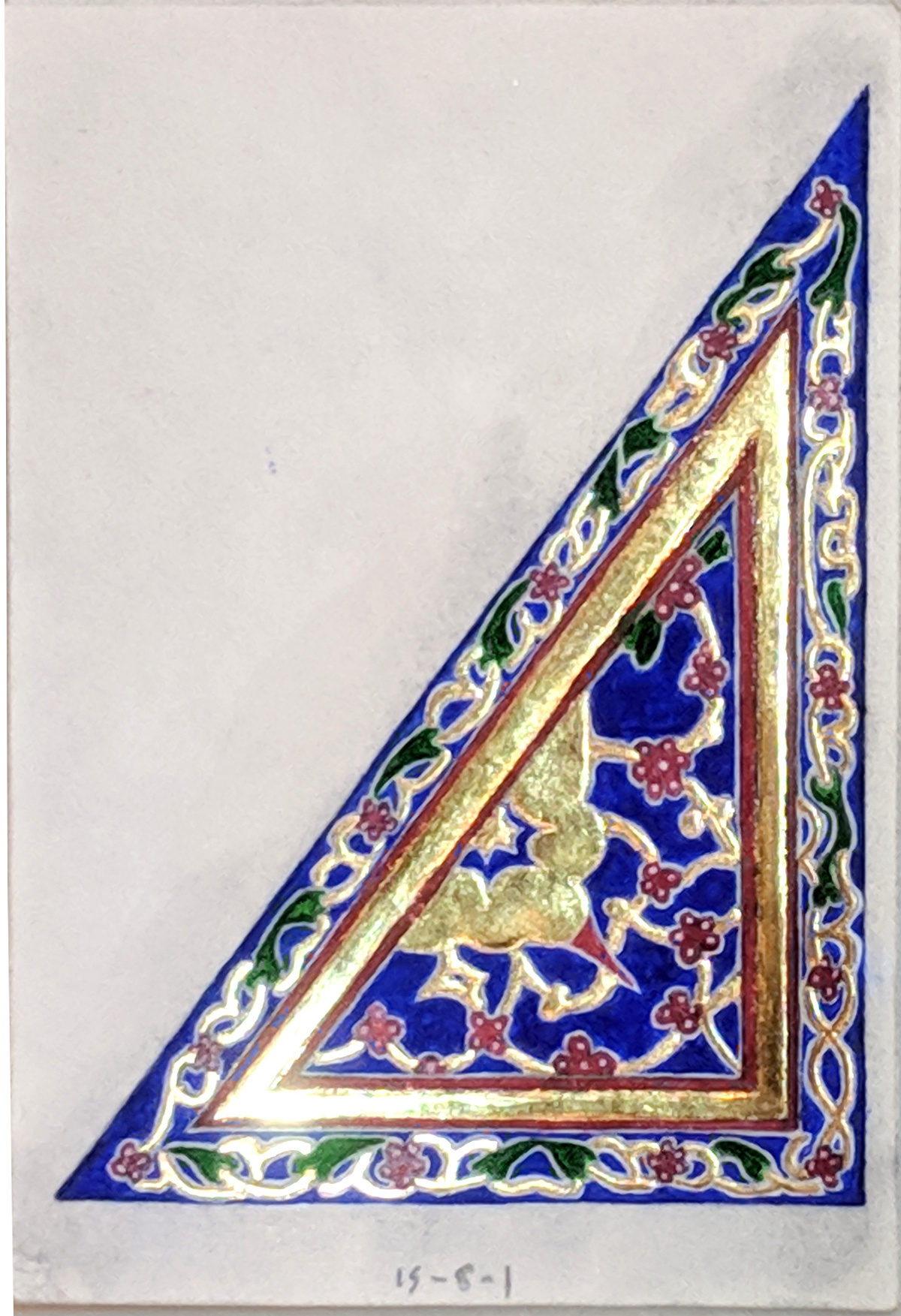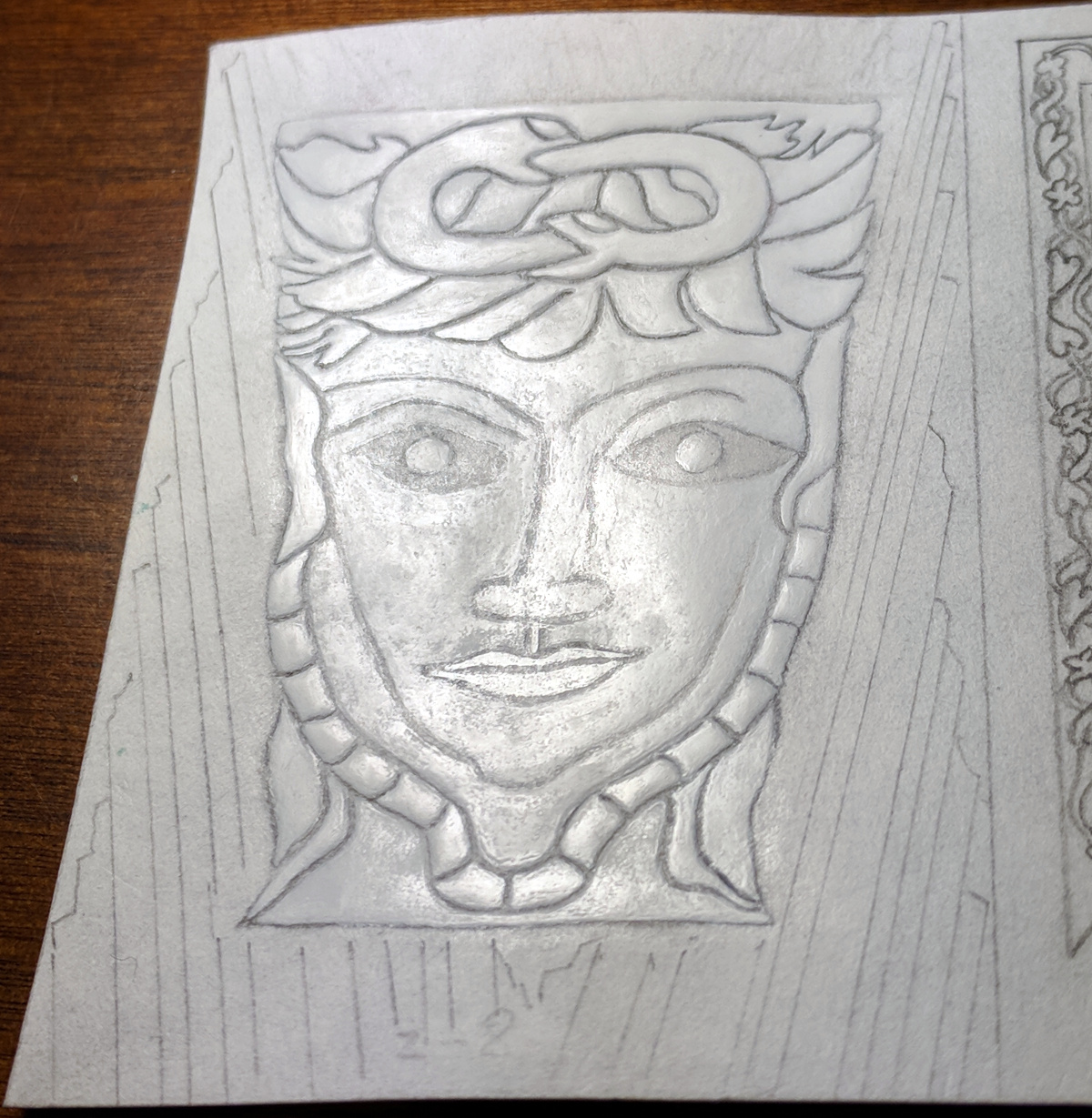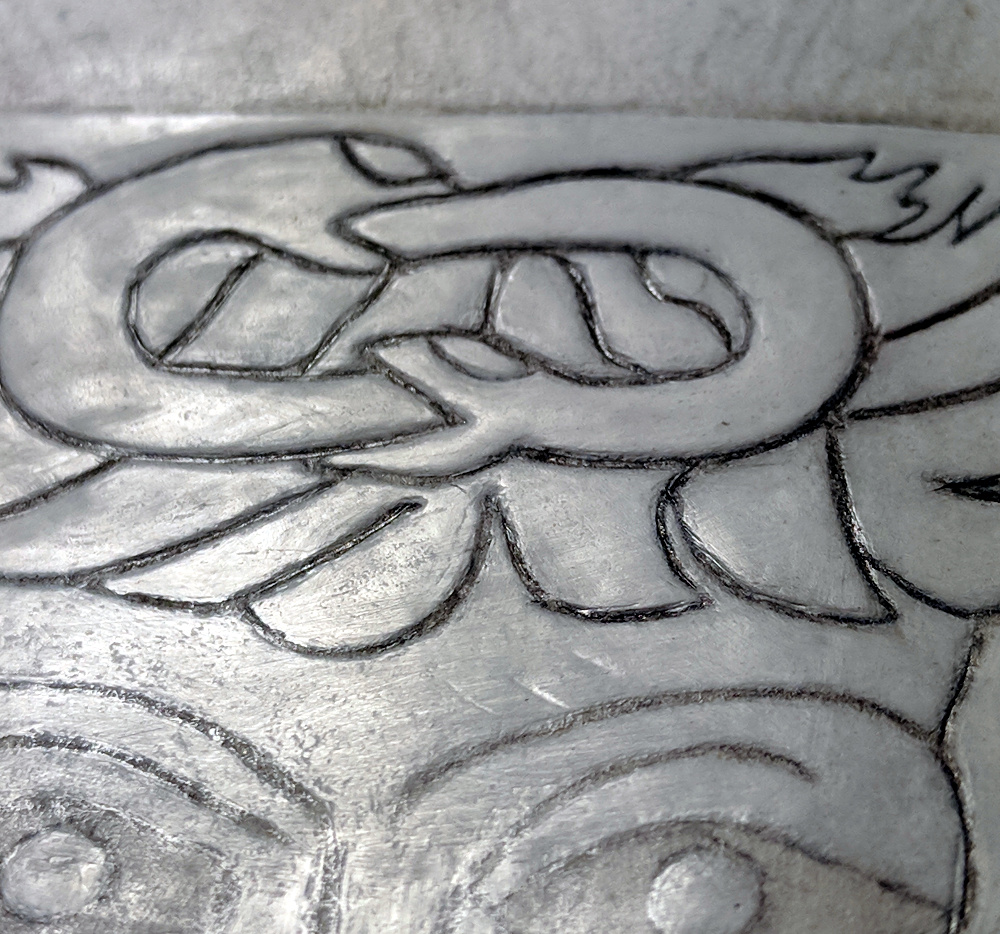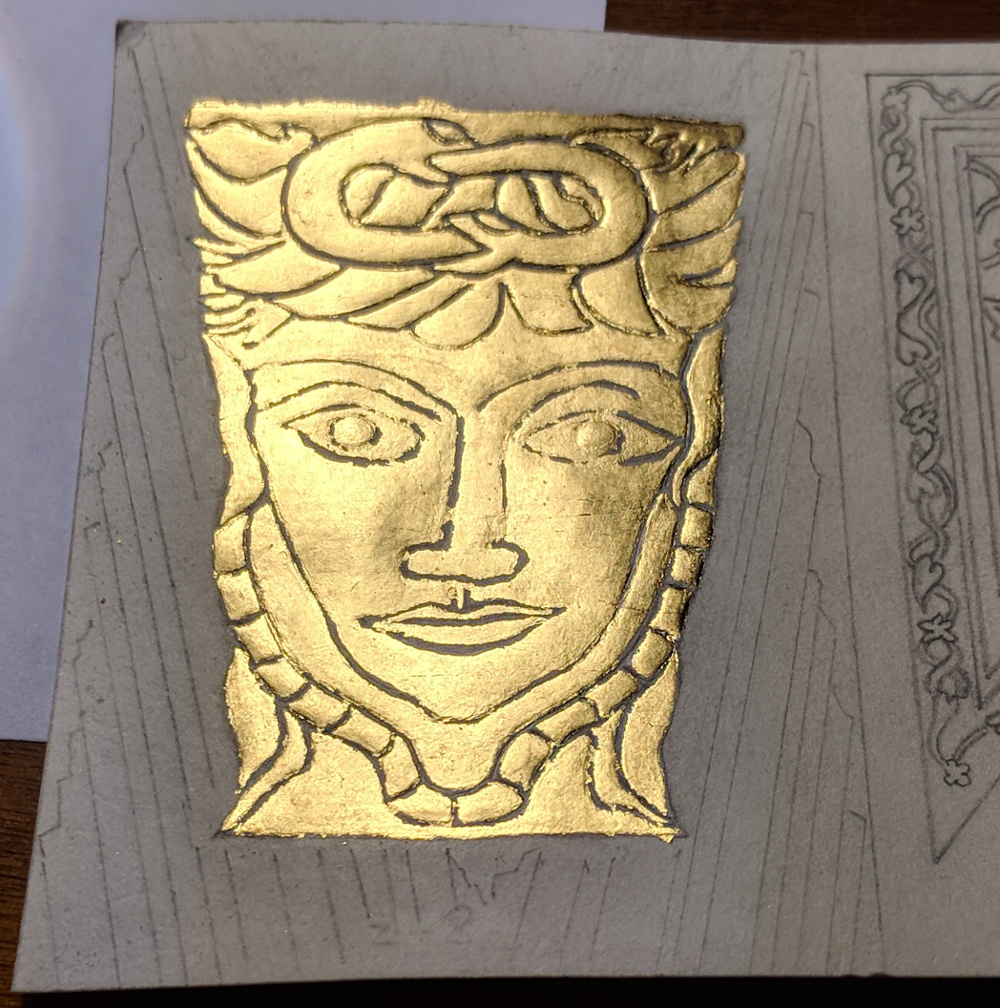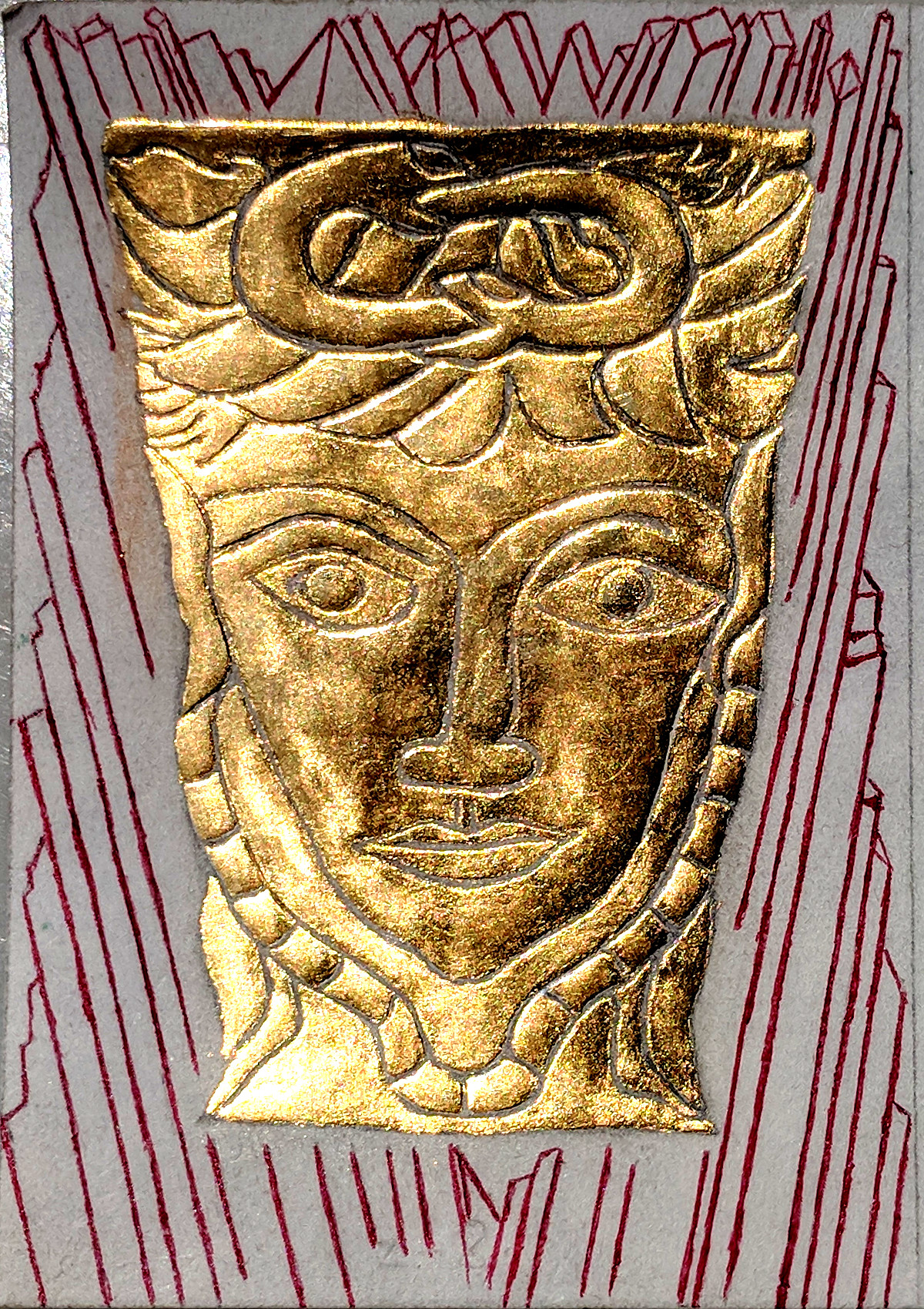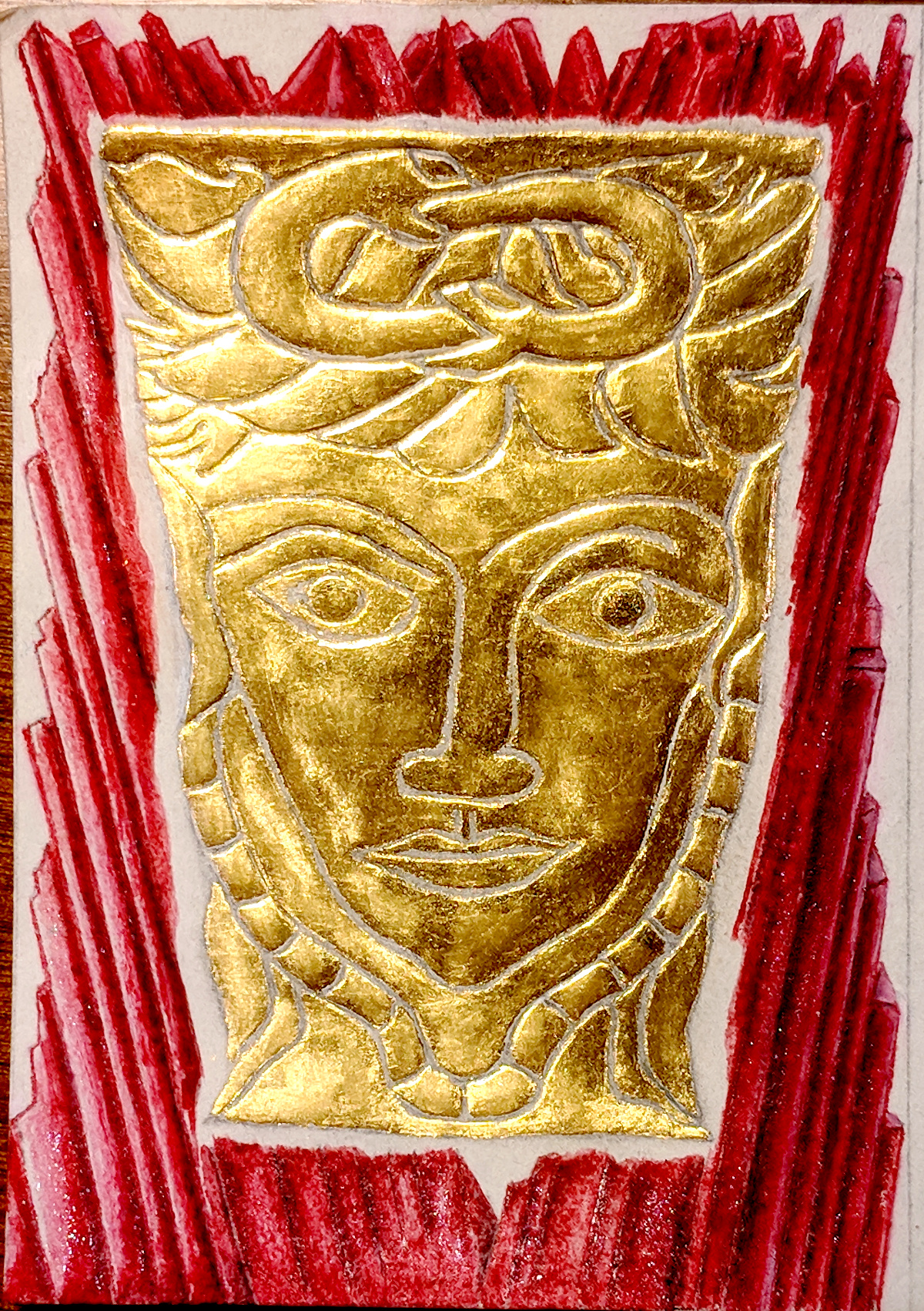In this, and 2 or 3 following posts, I’ll be presenting images of some notable details of an illuminated manuscript I produced of the opening scenes of a long narrative poem I recently completed, entitled The Atternen Juez Talen (The Eternal Jew’s Tale).
I began working on this manuscript over a year ago, using a pre-bound empty book that had been given to me as a gift by my wife Nancy some number of years ago. The paper appears to be a Nepalese tissue with minimal sizing (“size” is a technical term that means ‘surface sealant’; unsized paper will allow ink to feather, therefore making it unsuitable for most calligraphy). Thus, I had to size each sheet. I used a thinned acrylic medium as my size. If you’re curious about my decision to use acrylic, contact me.
The sizing process was complicated for 3 reasons:
1. wetting the sheets meant they would become buckled and wrinkled upon drying;
2. since sizing is glue of one sort or another, it meant that if I put the pages in a press to avoid buckling, they would stick together into a solid block; and
3. since the book was already bound, pressing each sheet individually would have been prohibitively time consuming.
I’ll spare you the details of my solution, but needless to say, for this 156 sheet book it required over 2 months to complete the sizing project. But the result was quite nice. The acrylic size made the sheets somewhat pearlescent and translucent, which I liked a lot. But it meant I could only write on one side of each sheet. So suddenly, my 312 page book (156 sheets, both sides) became a 156 page book. No worries. It kept me plenty busy for another 10 months.
The production process was rather straight forward. First I did the calligraphy, using India ink. Then, using water colors, I painted small portraits on pages where the right margin of the text was wide enough to allow a miniature. Then I illuminated all the section breaks with various versions of a sunburst. There were about 20 of these illuminations. After that, I did a number of full and half-page illustrations, again using water colors. Finally, I bound the book in blue leather. Since I used a chrome-based tanned leather, it wouldn’t take gold tooling, so I painted the title on the front and spine, using acrylic paint.
In this post I’ll present images of the binding, the title page, and the end papers.
Enjoy!
